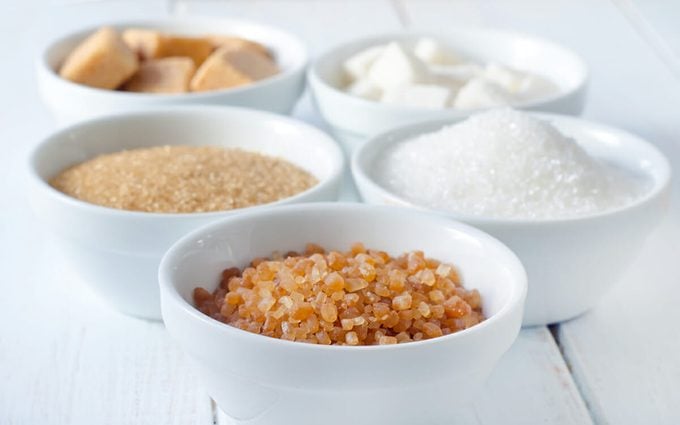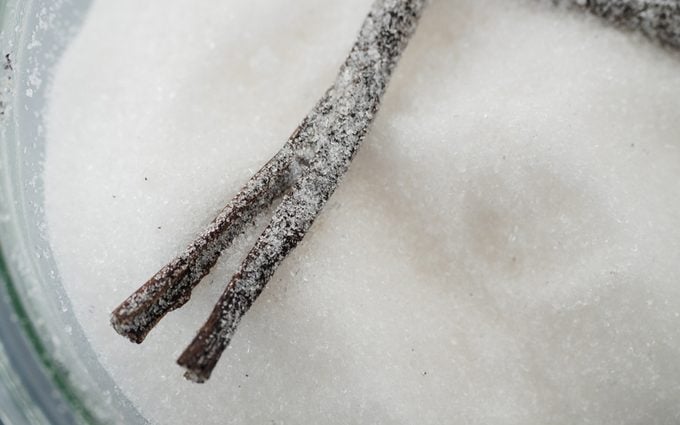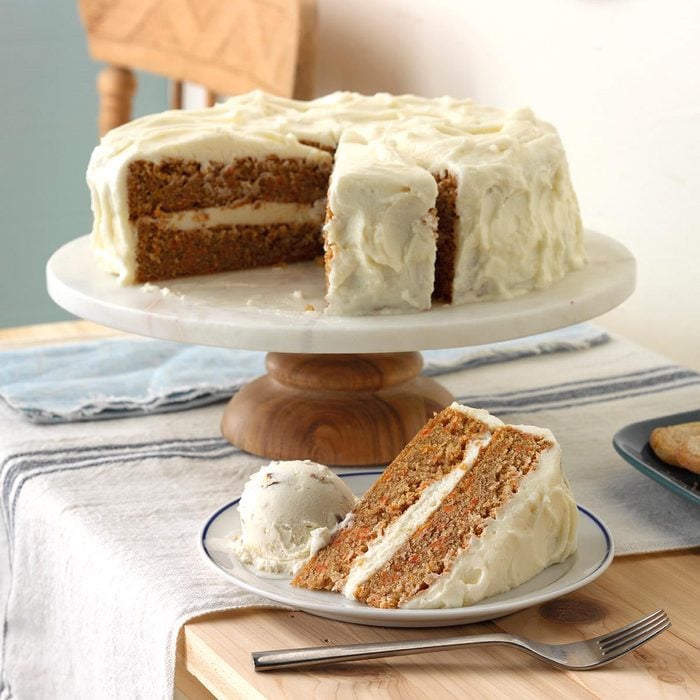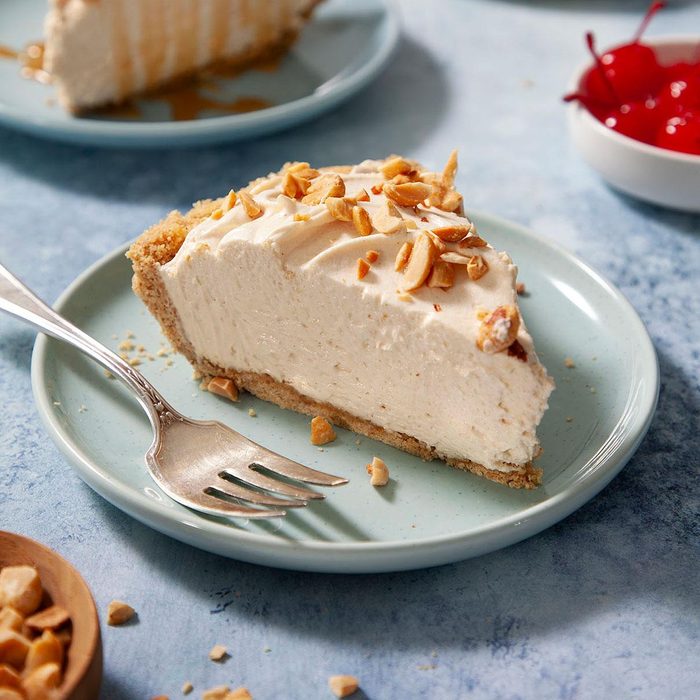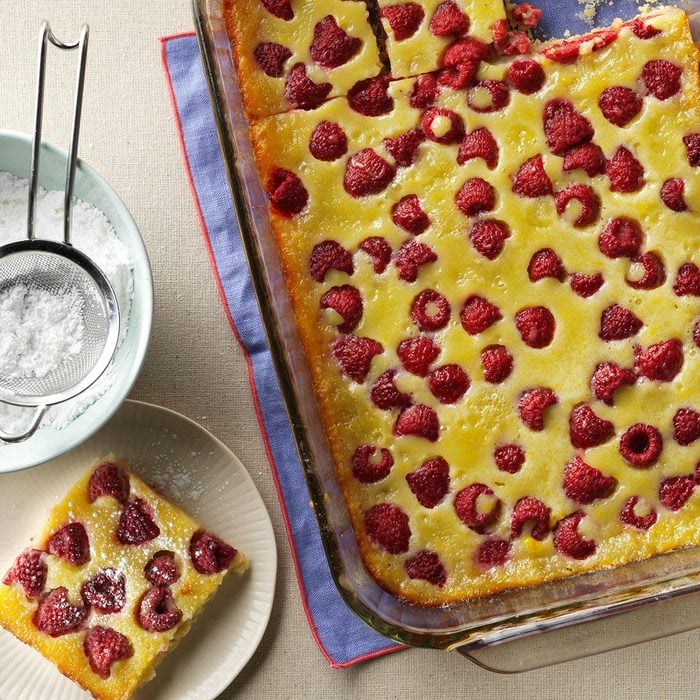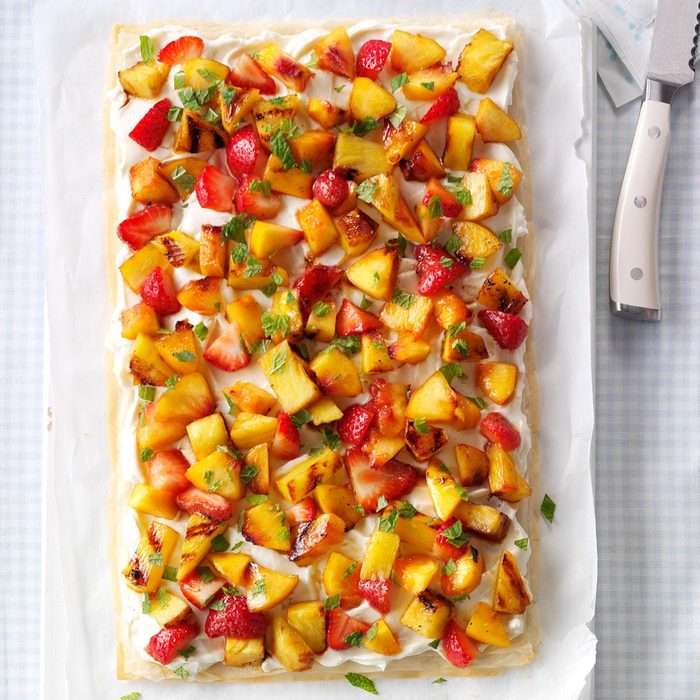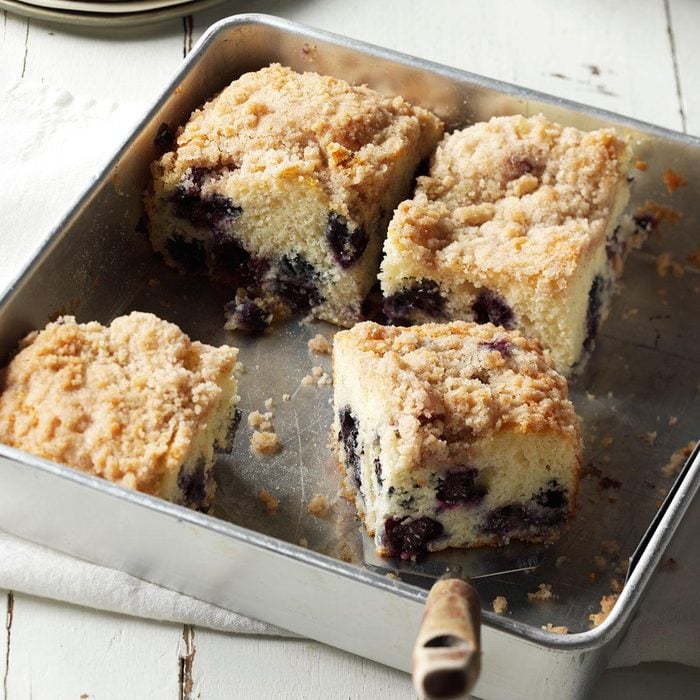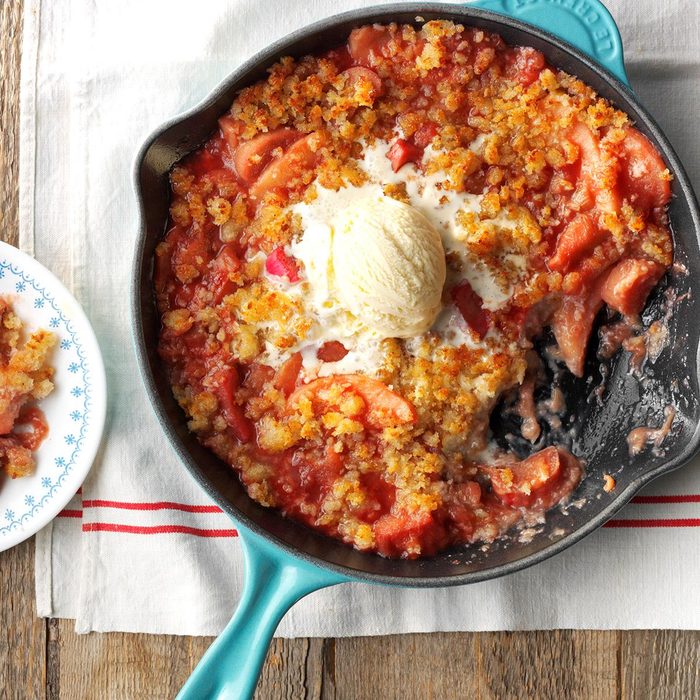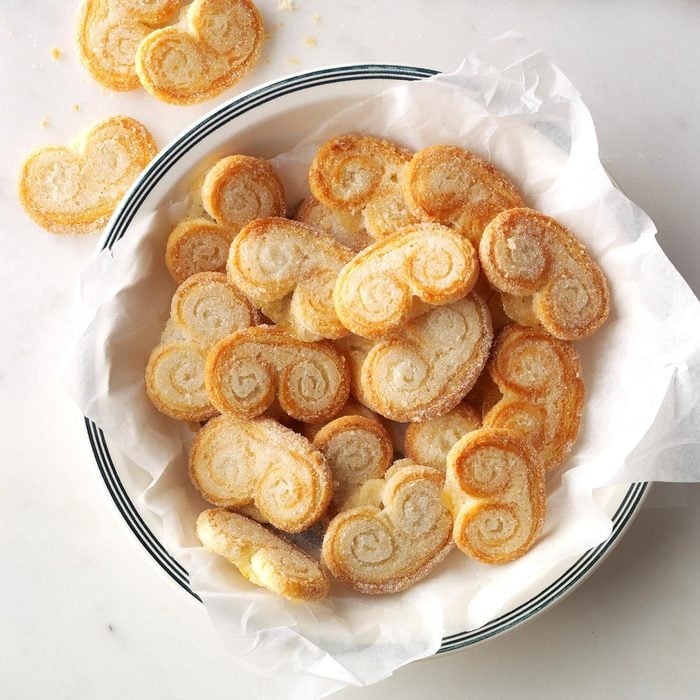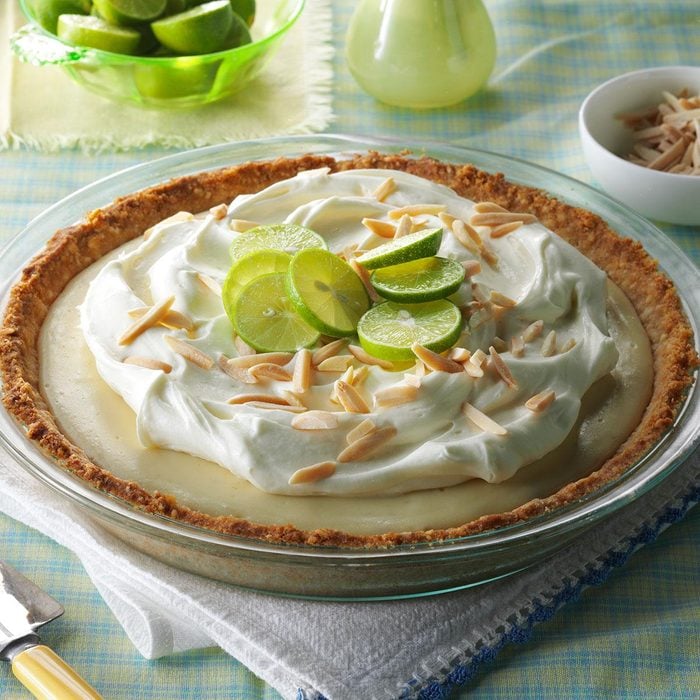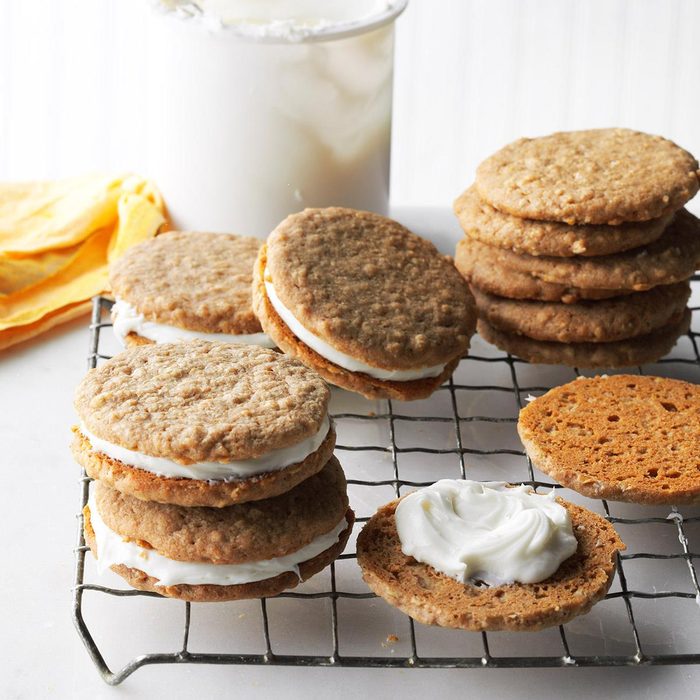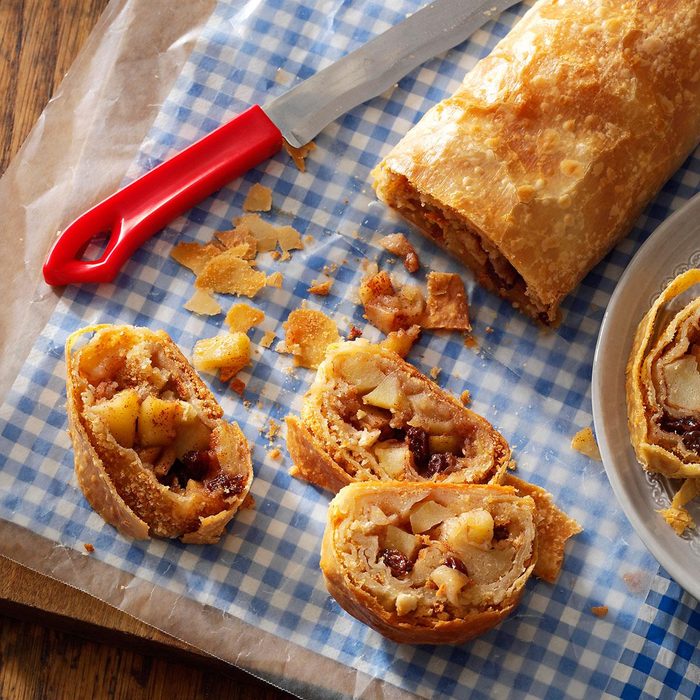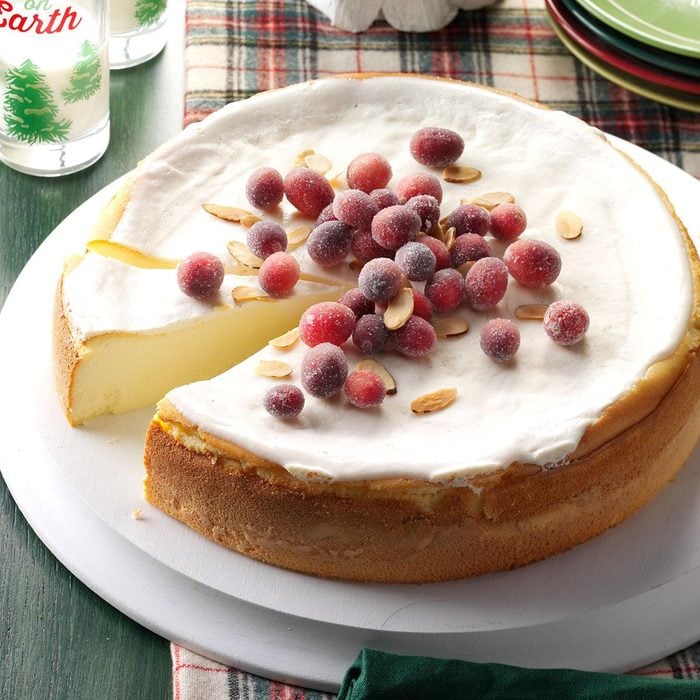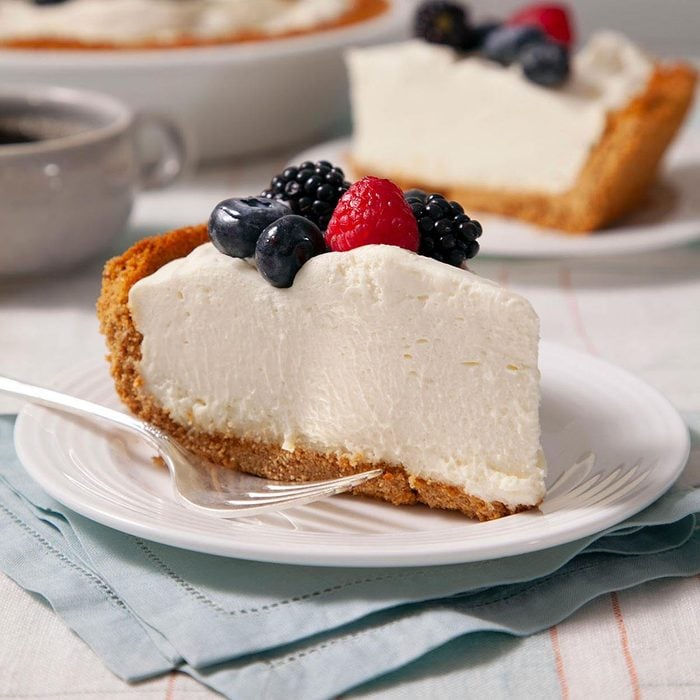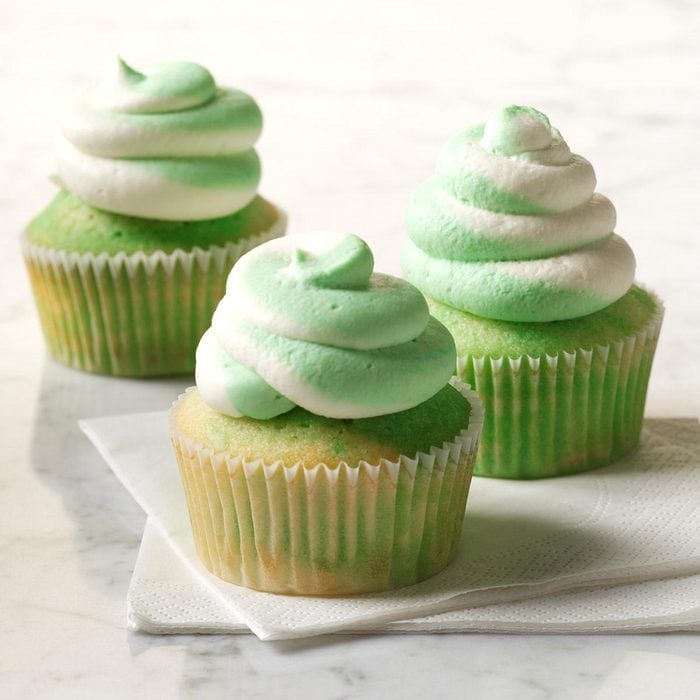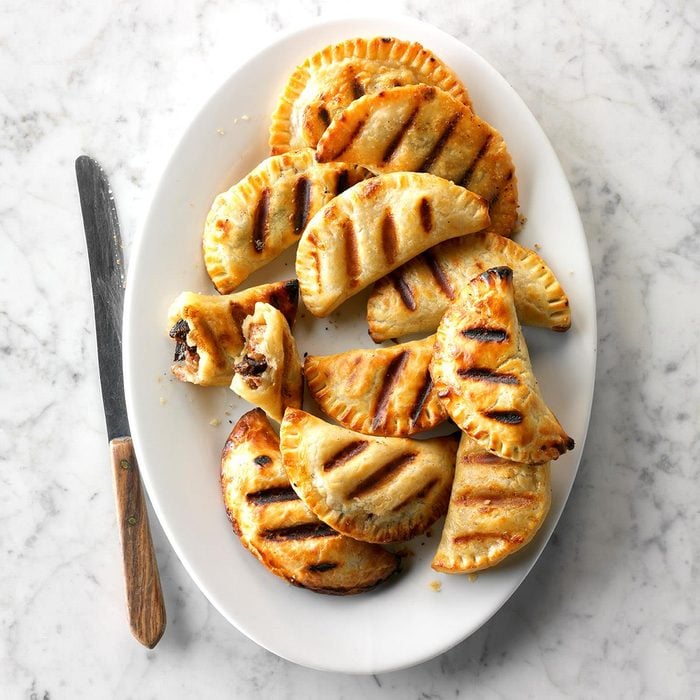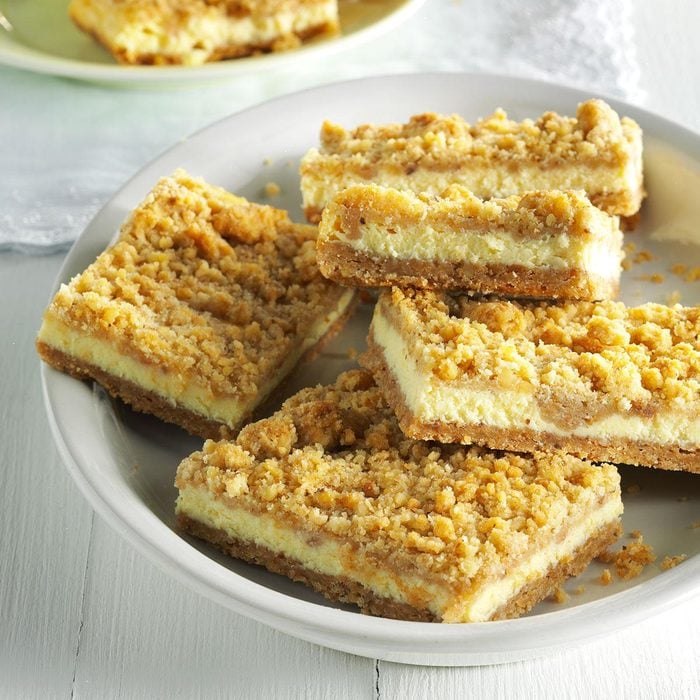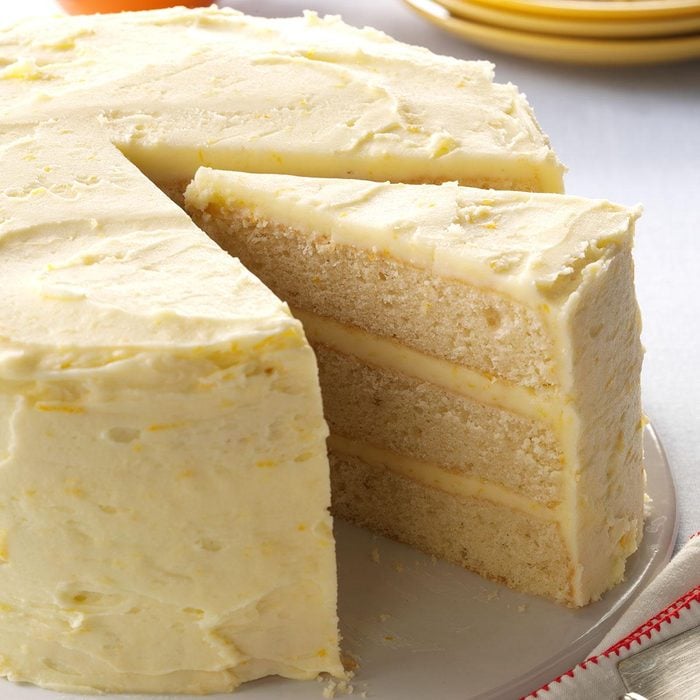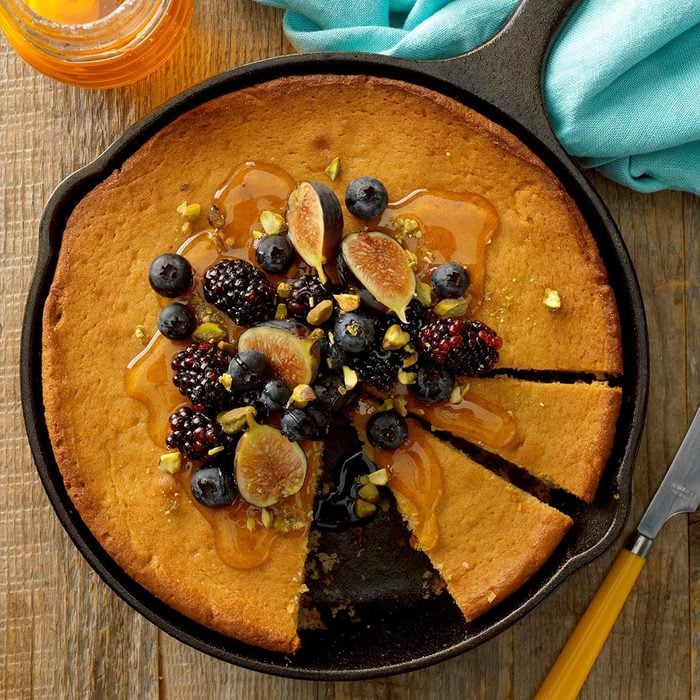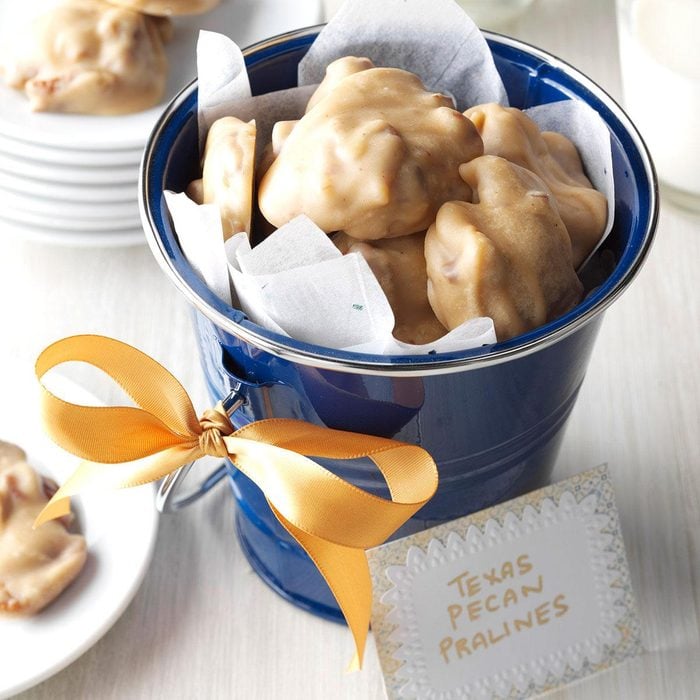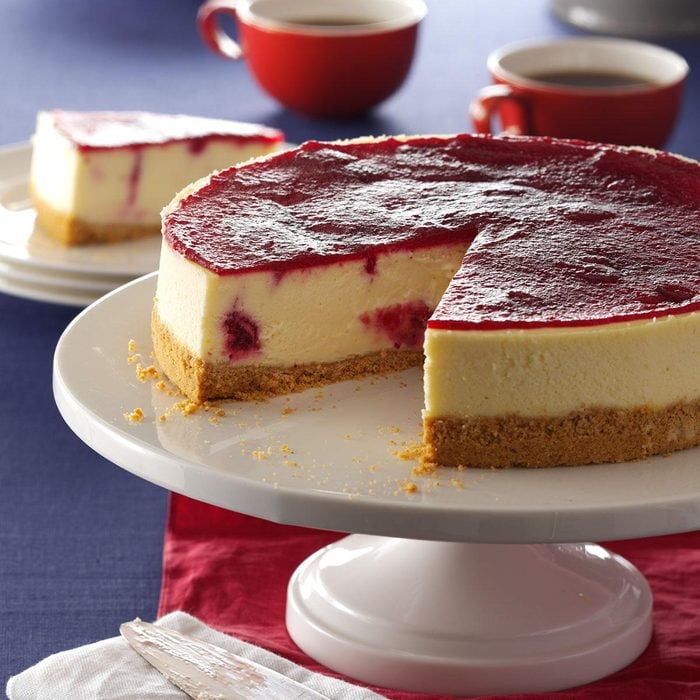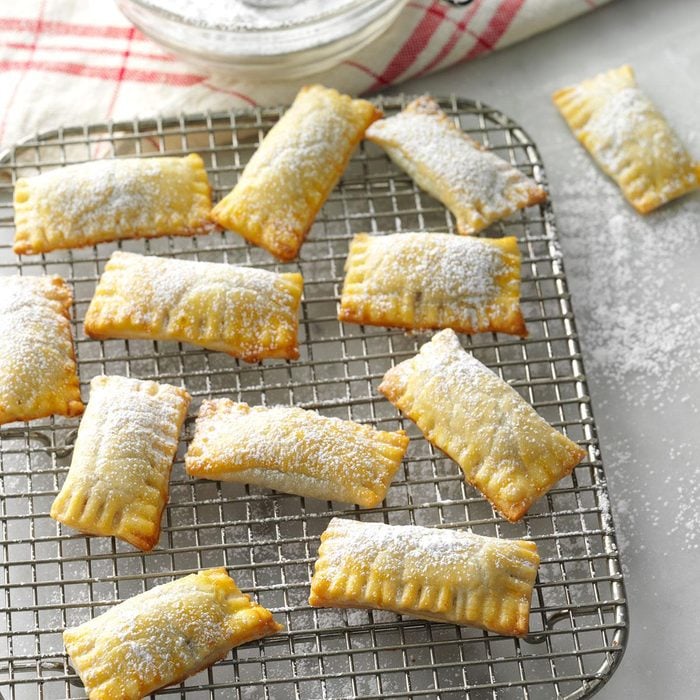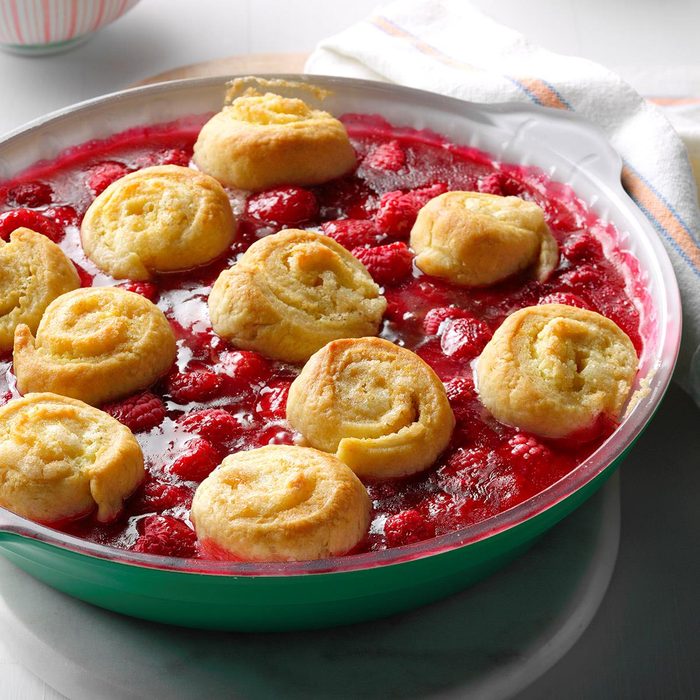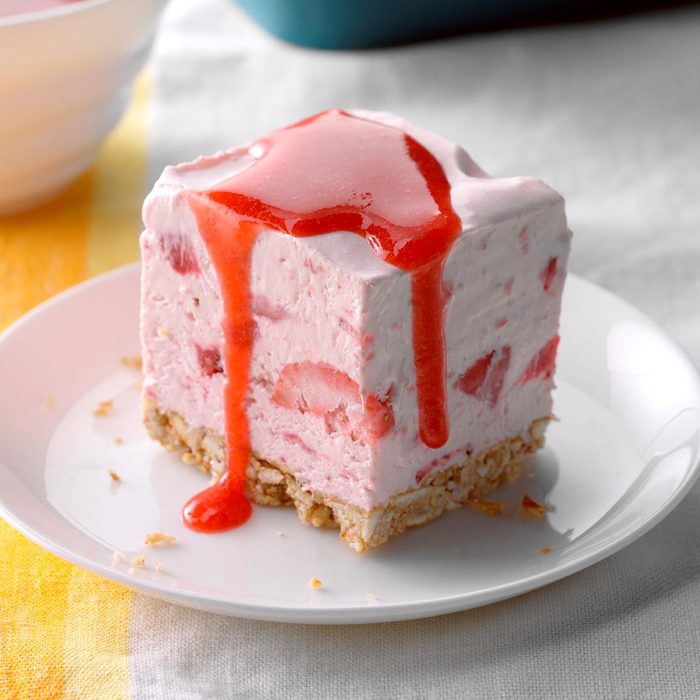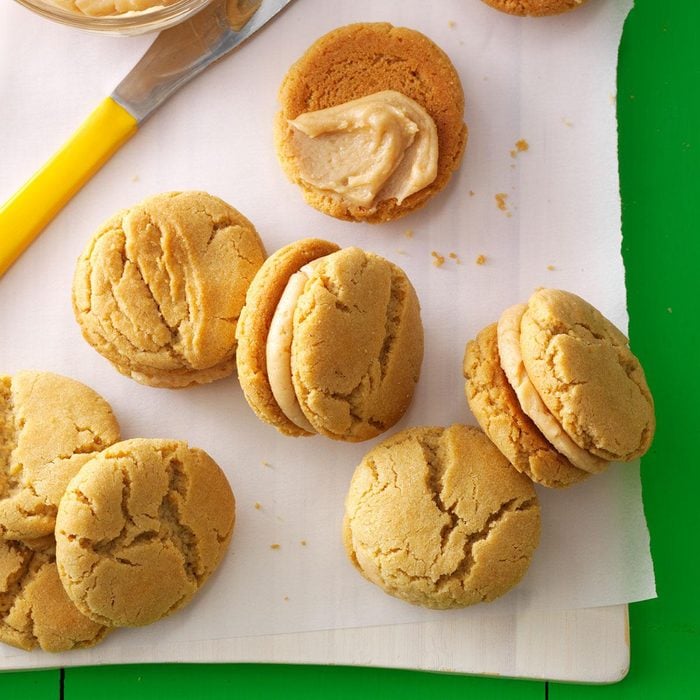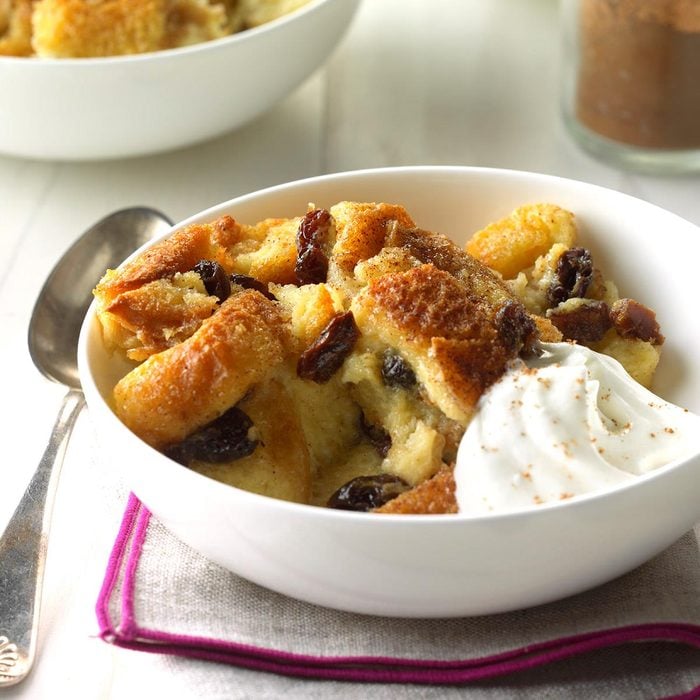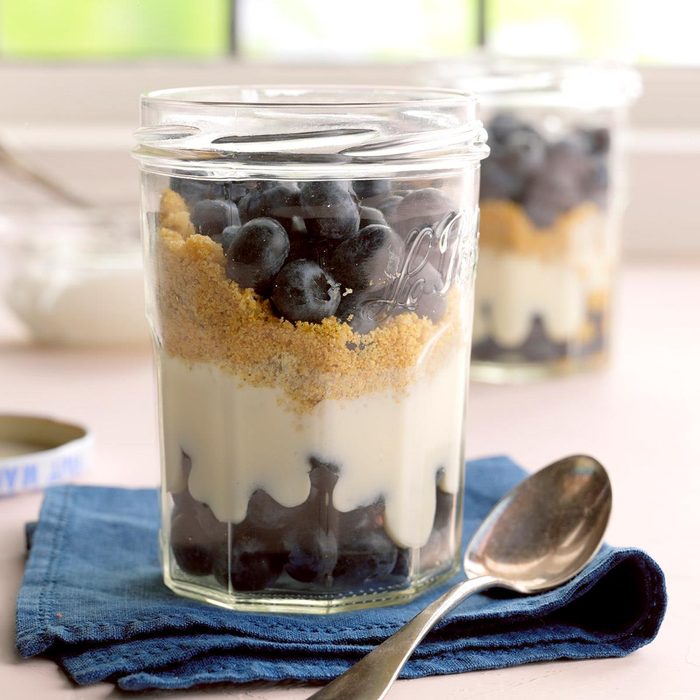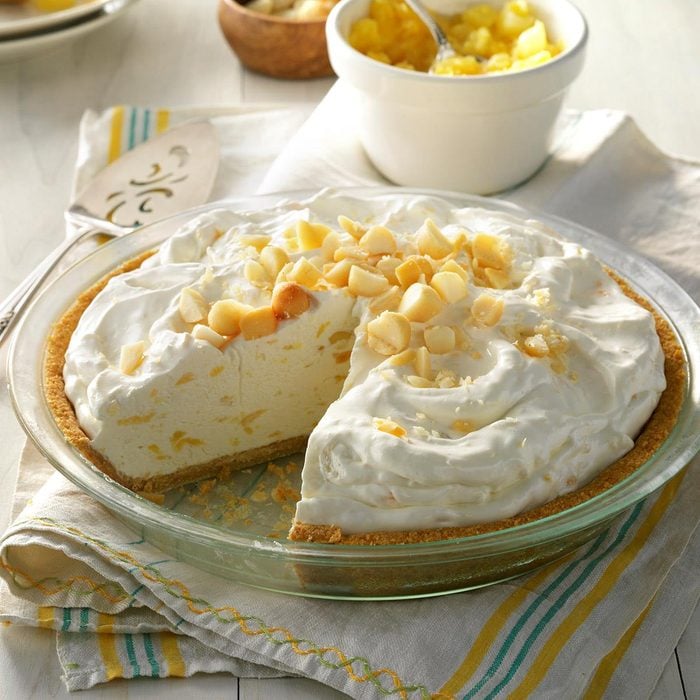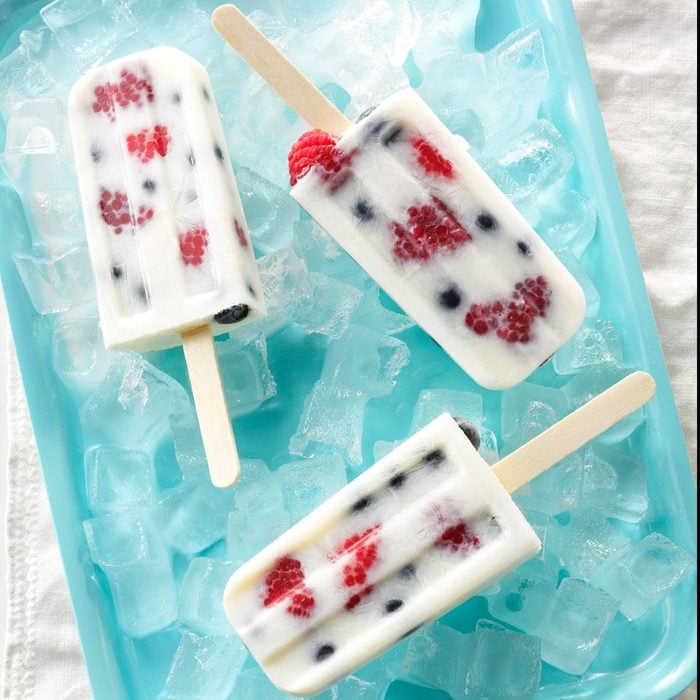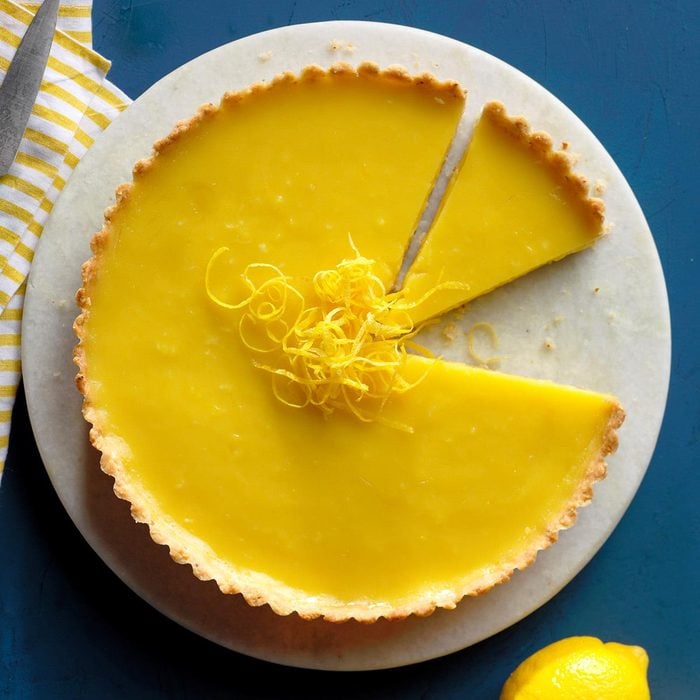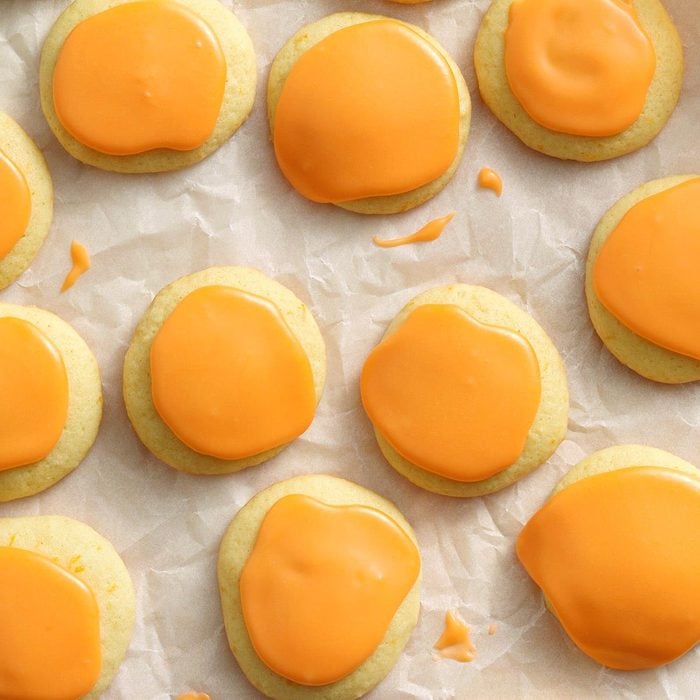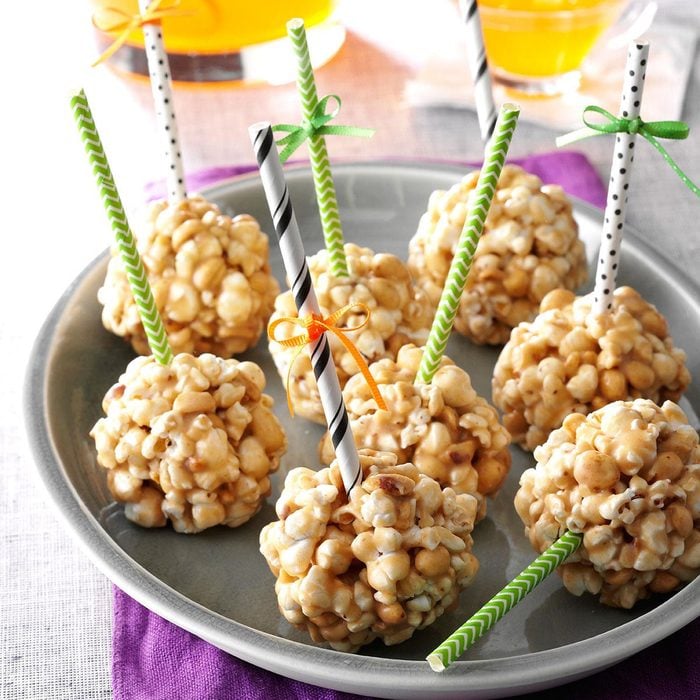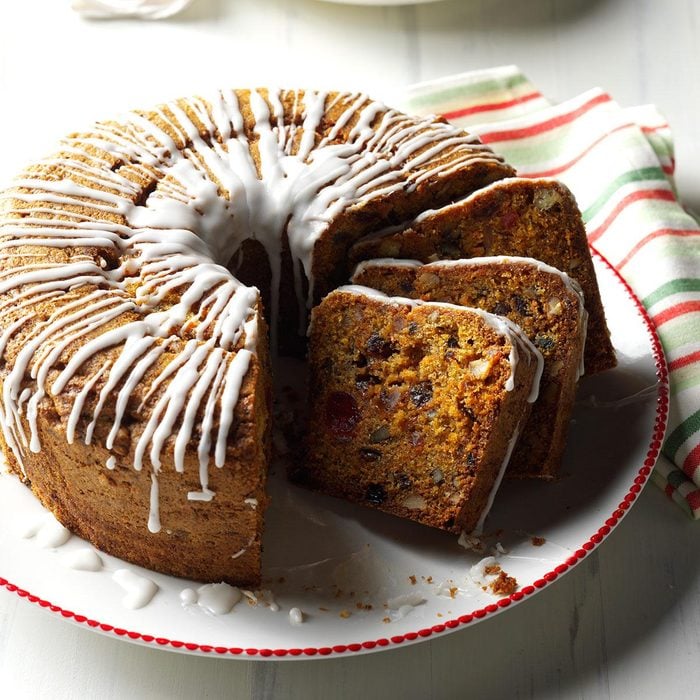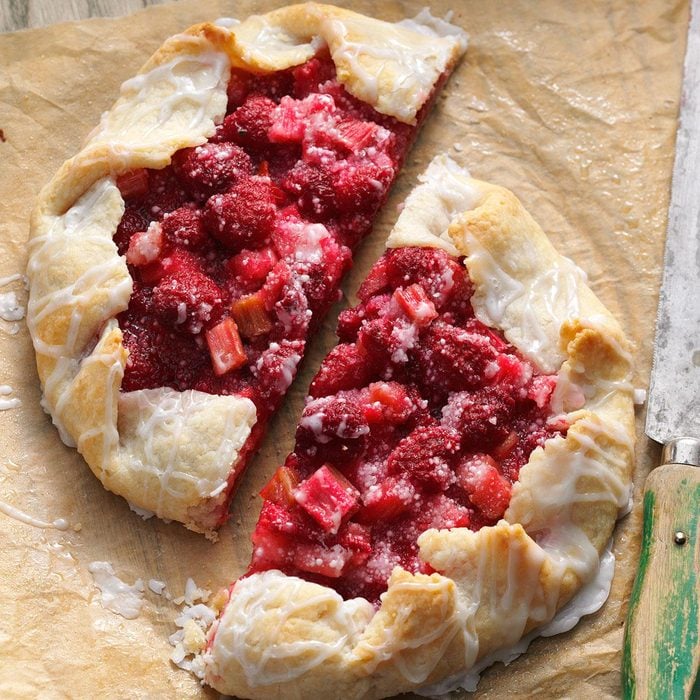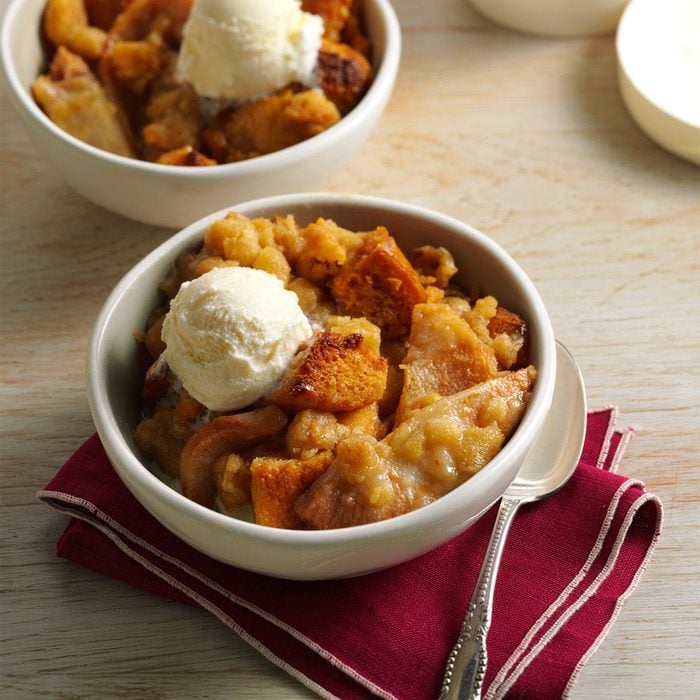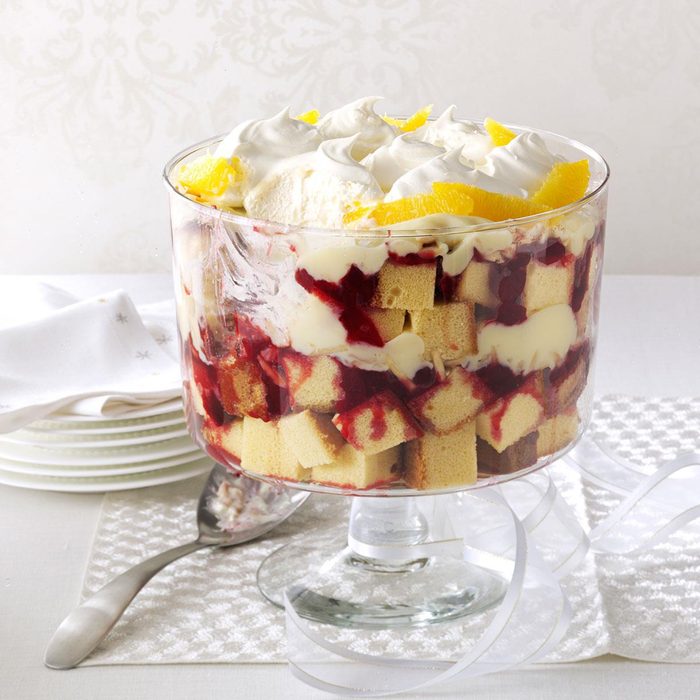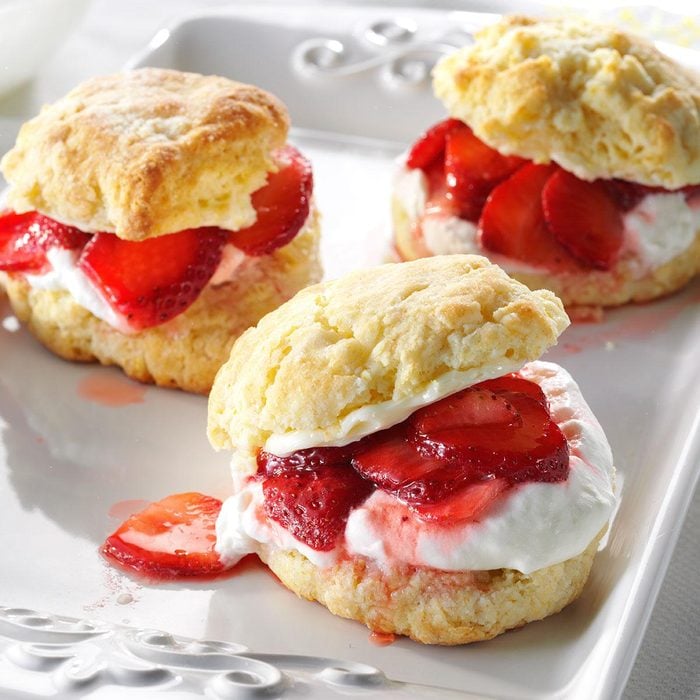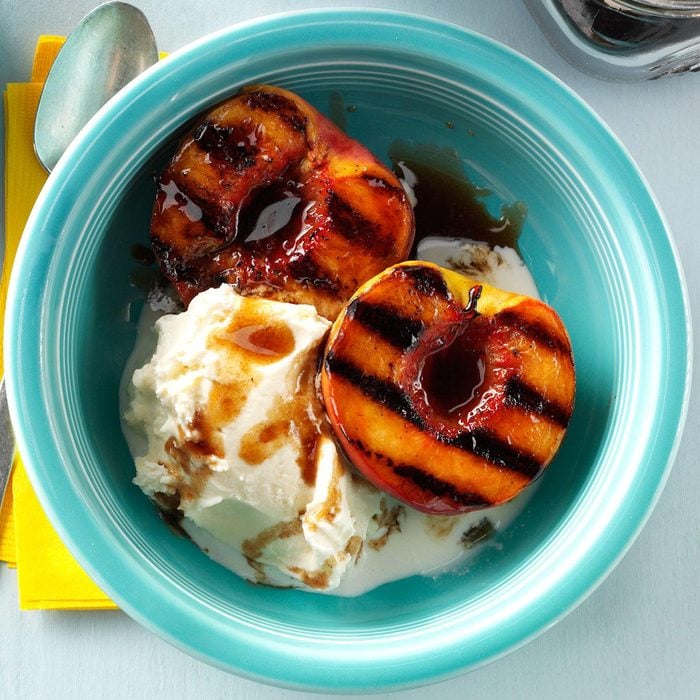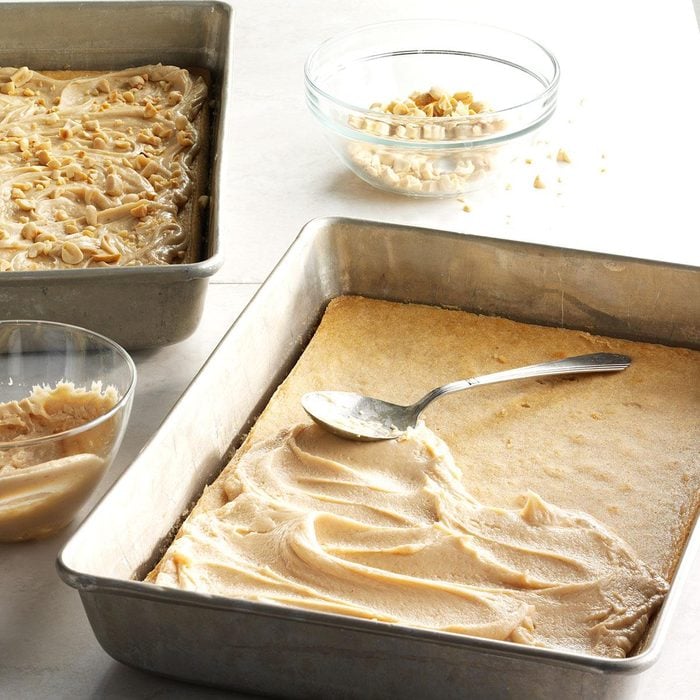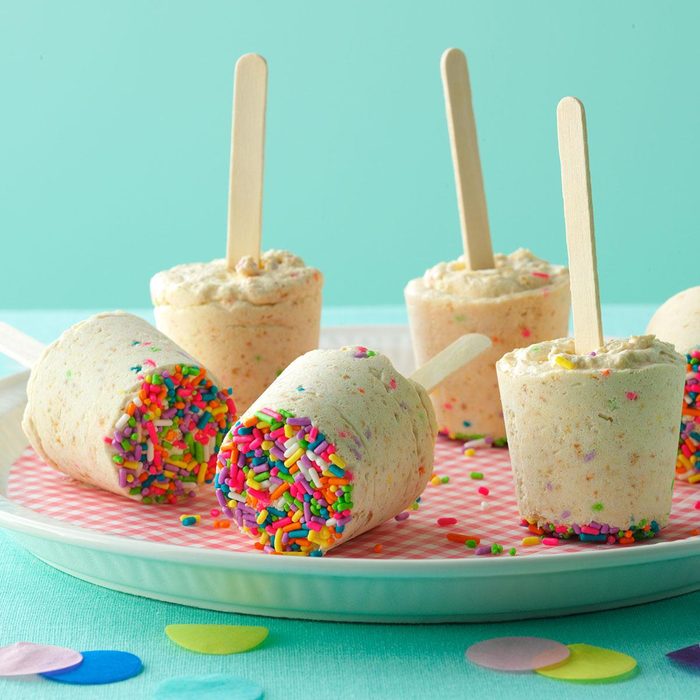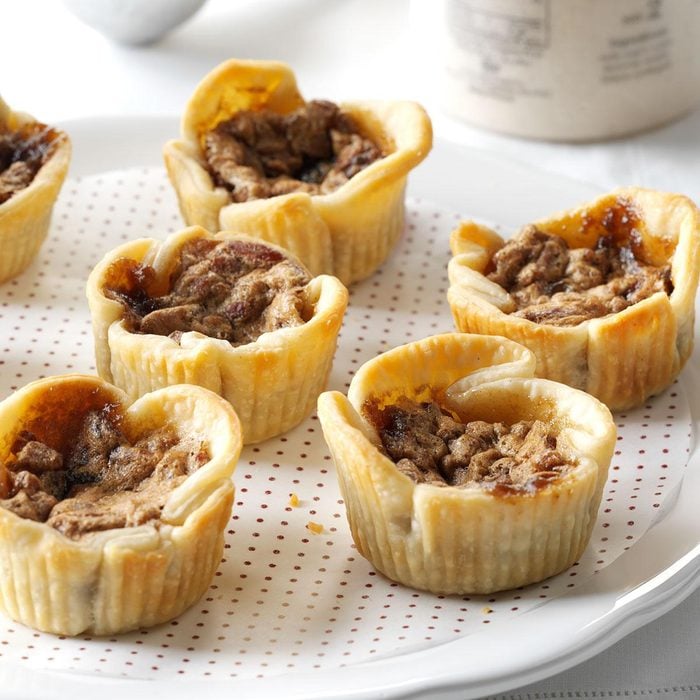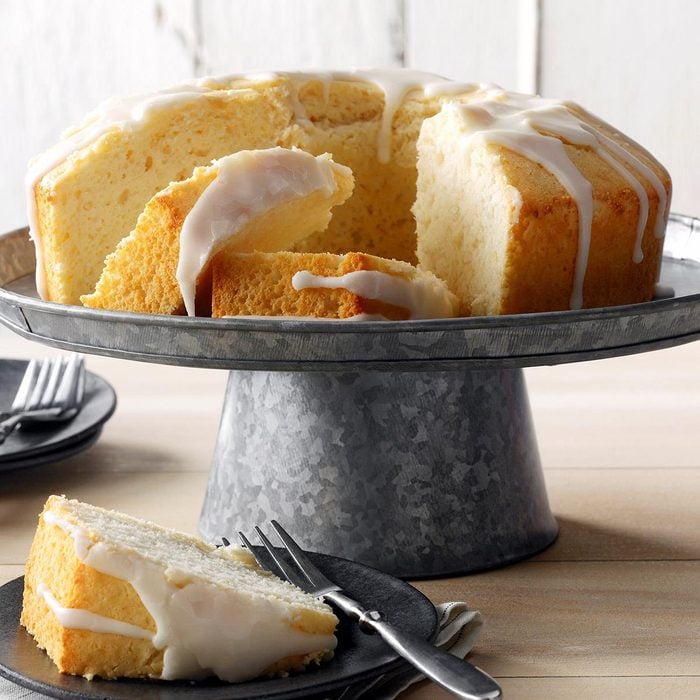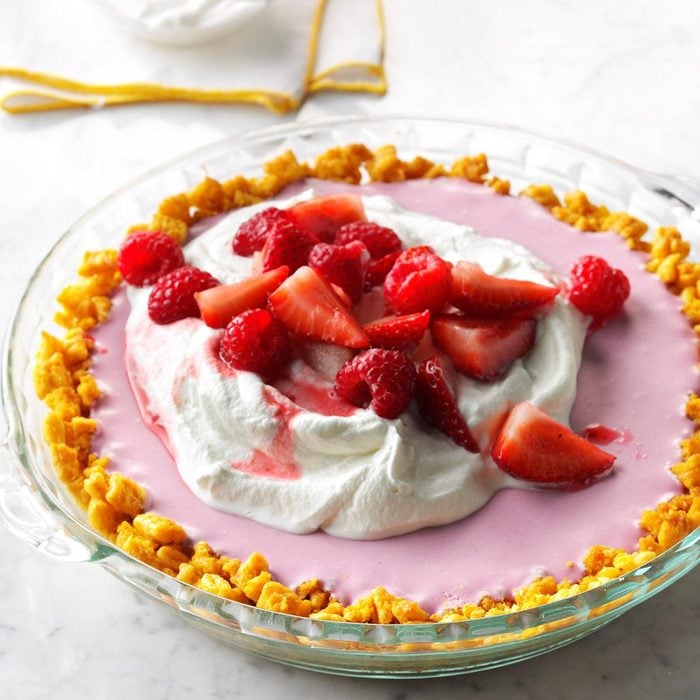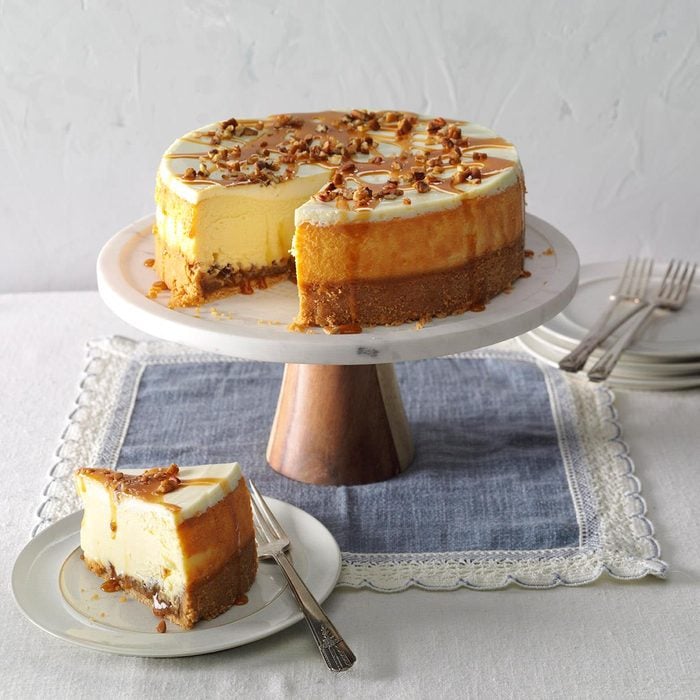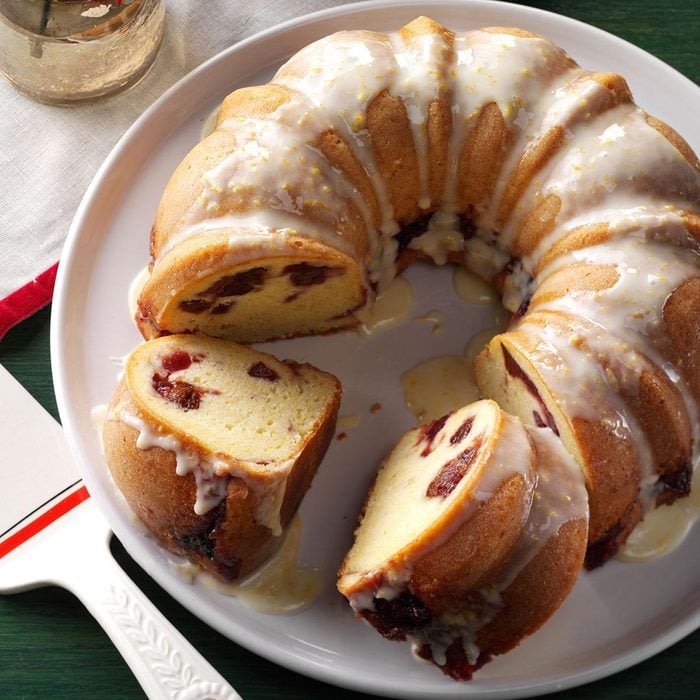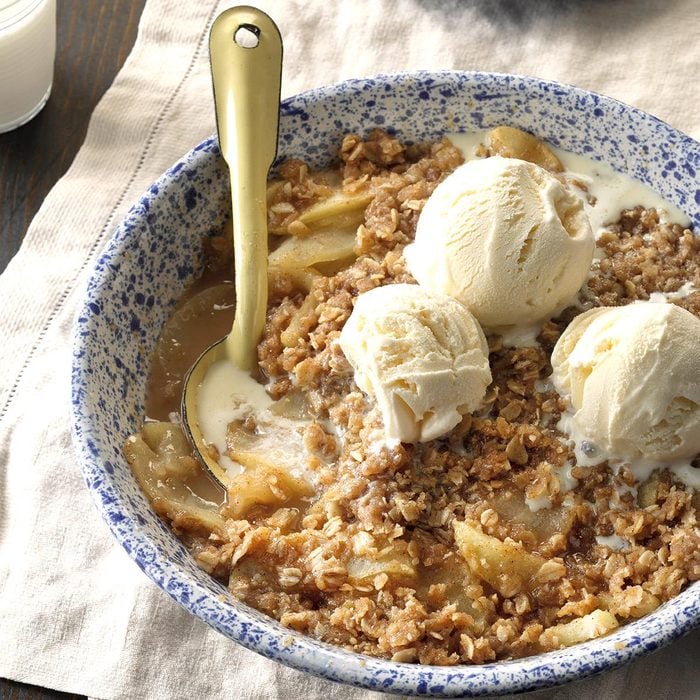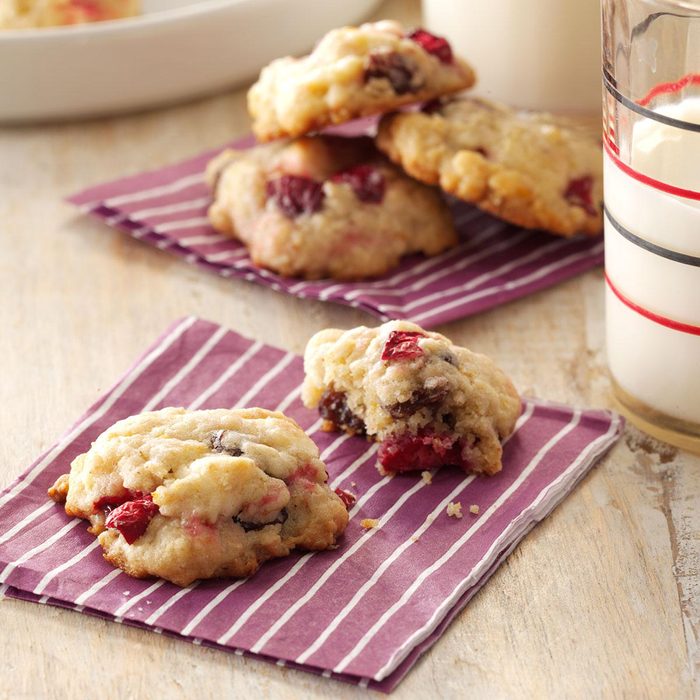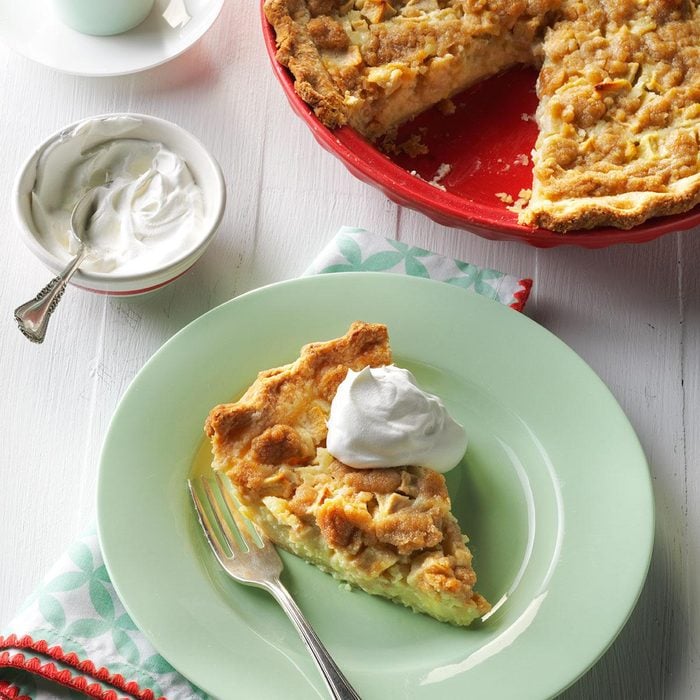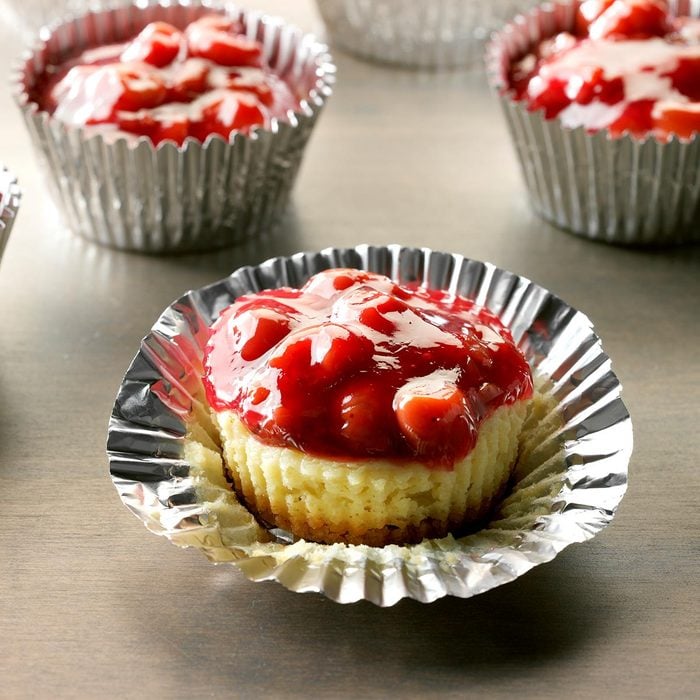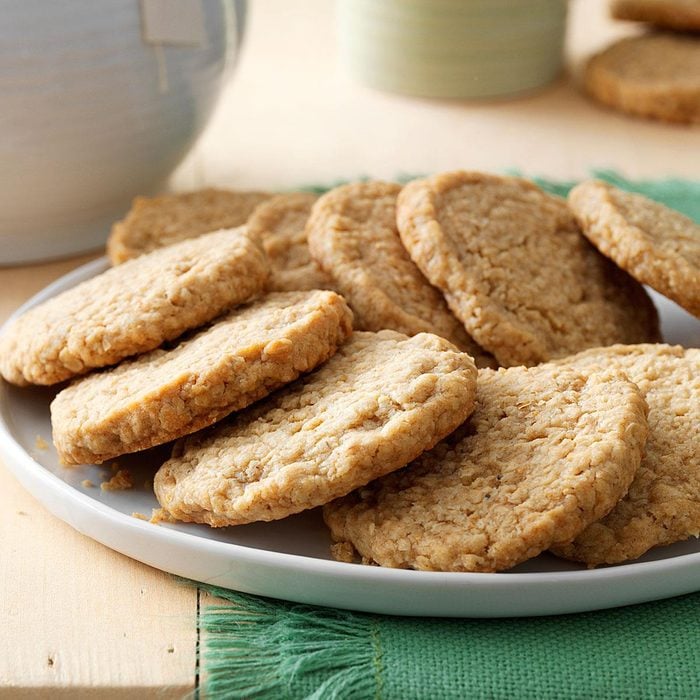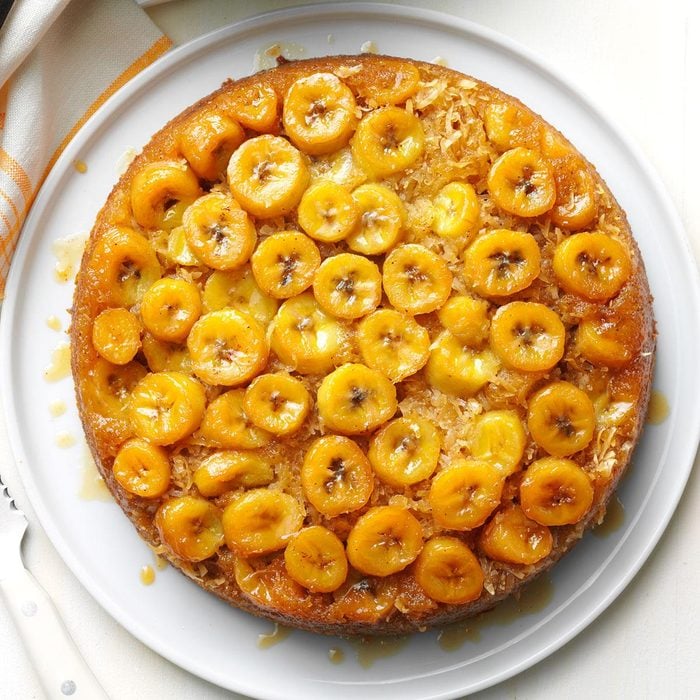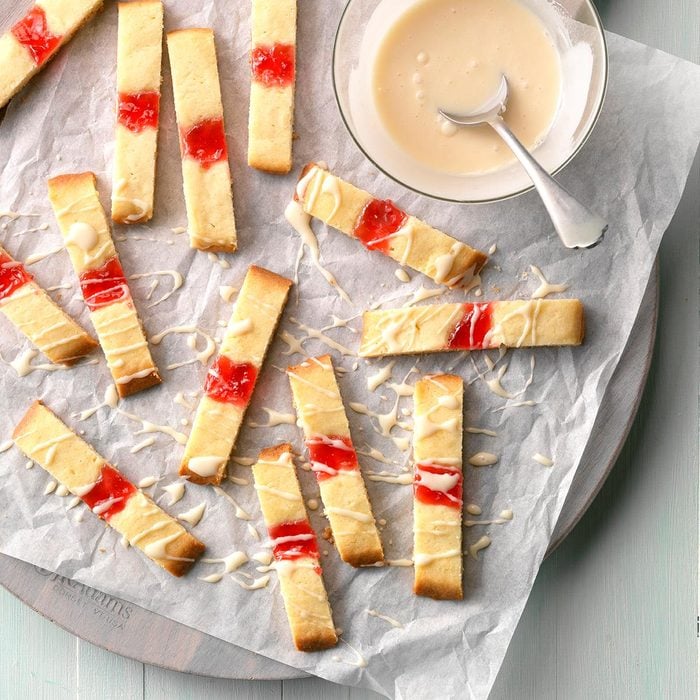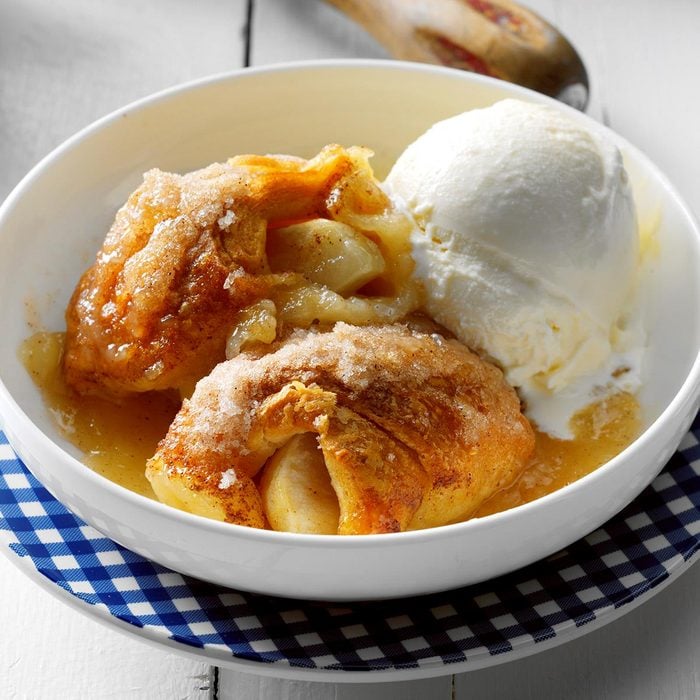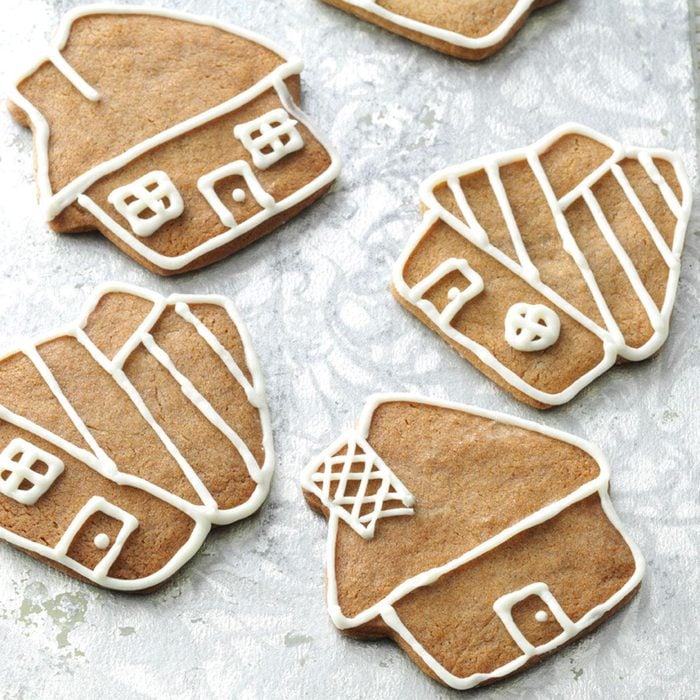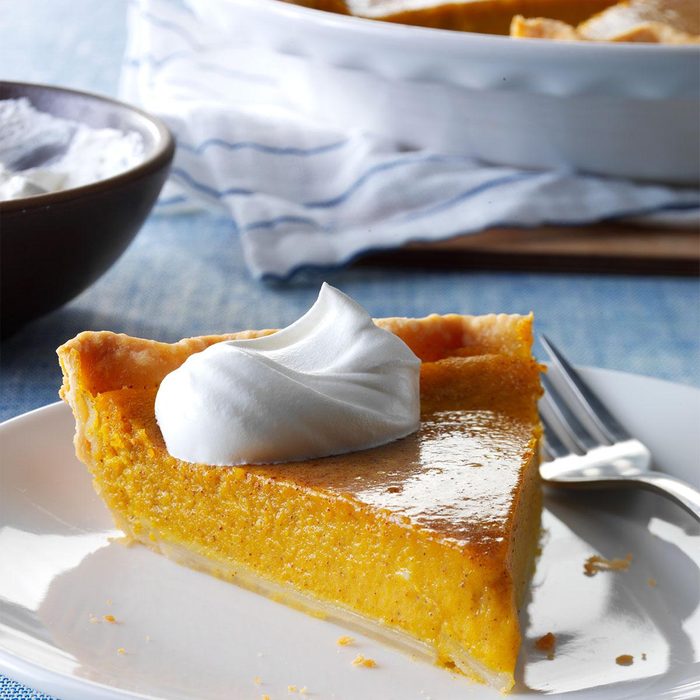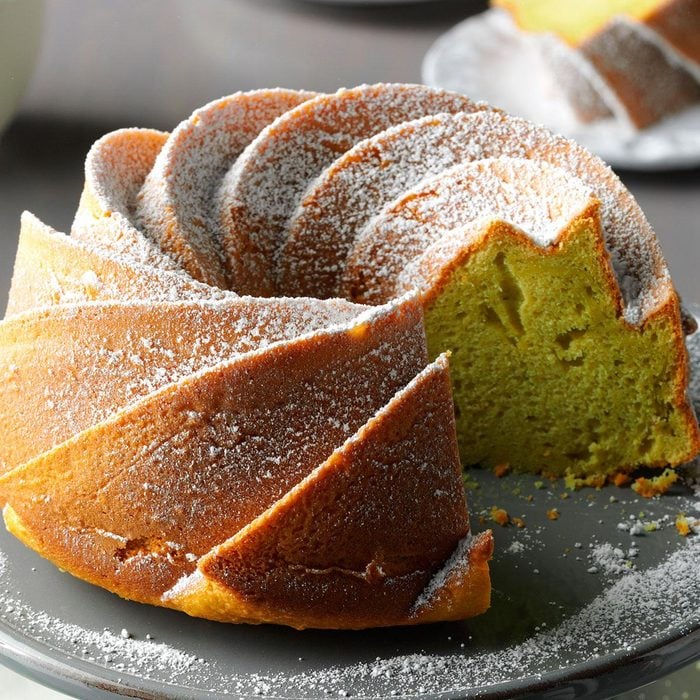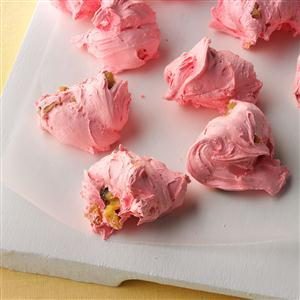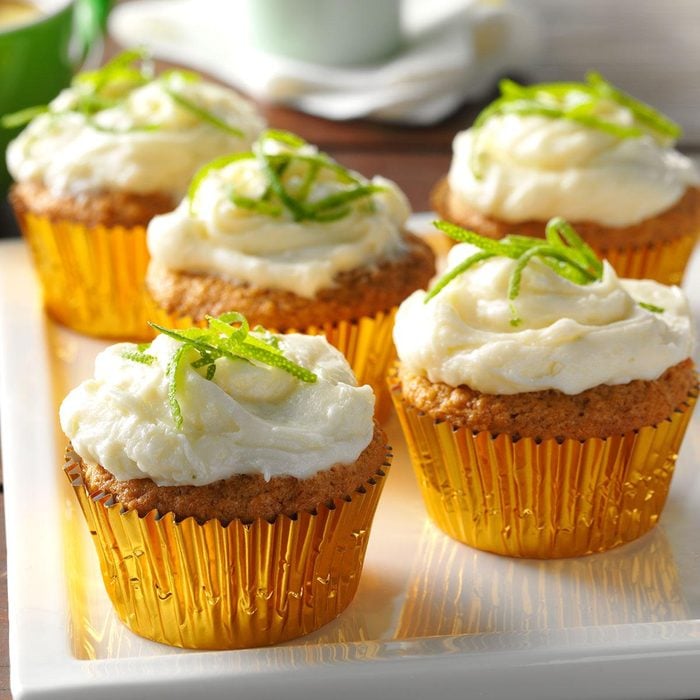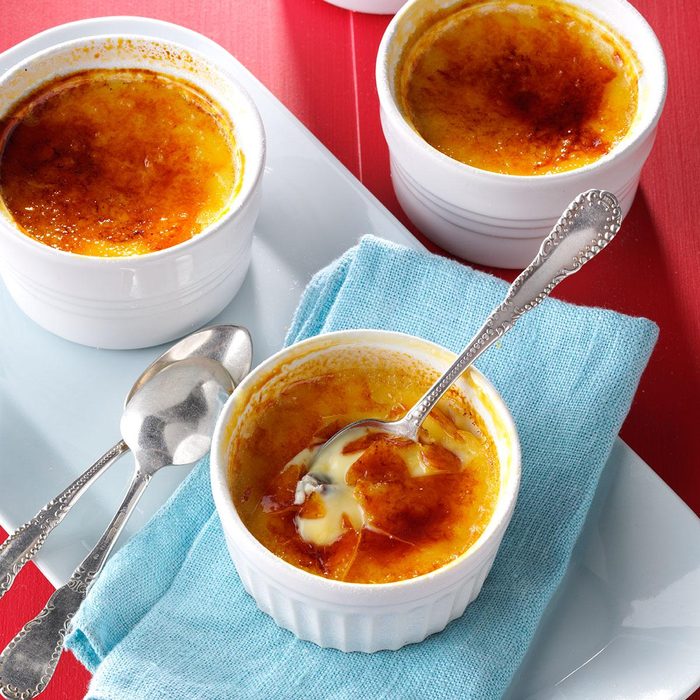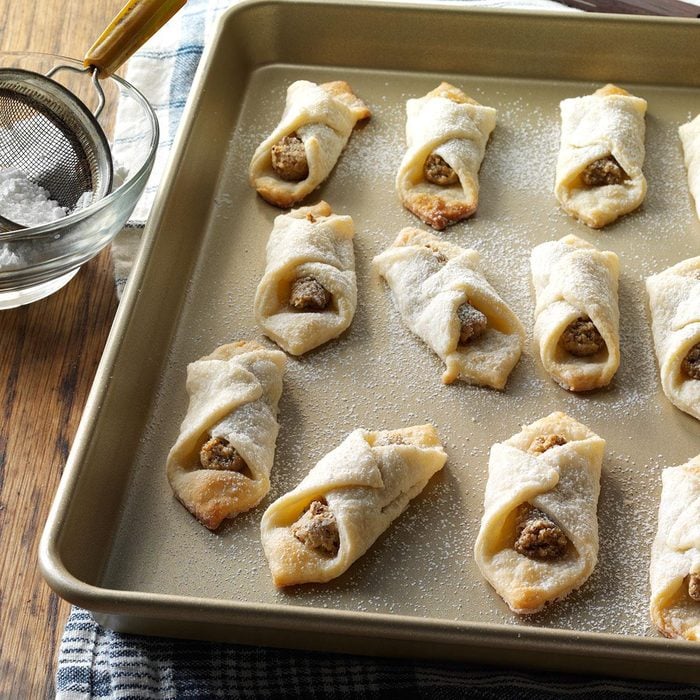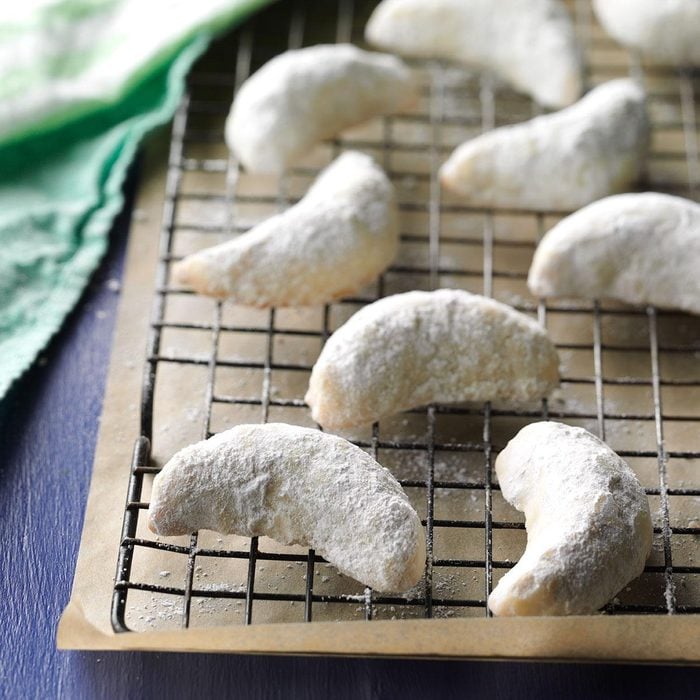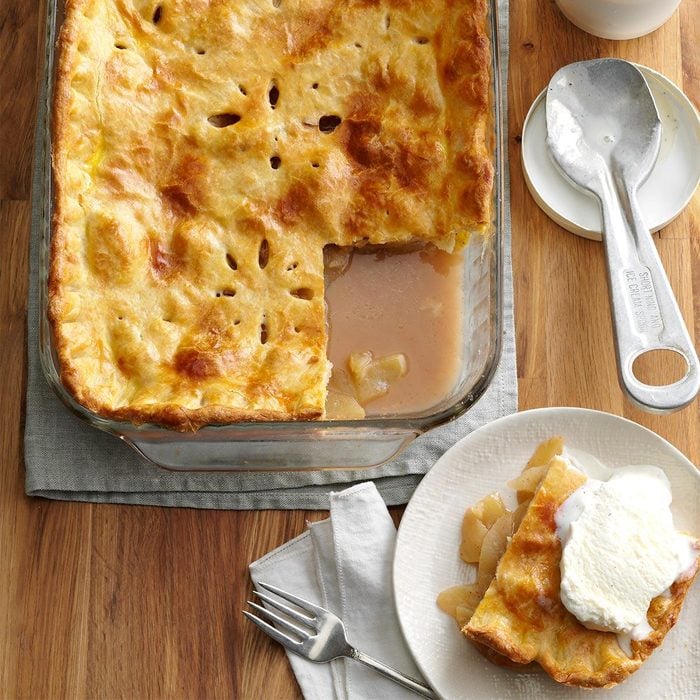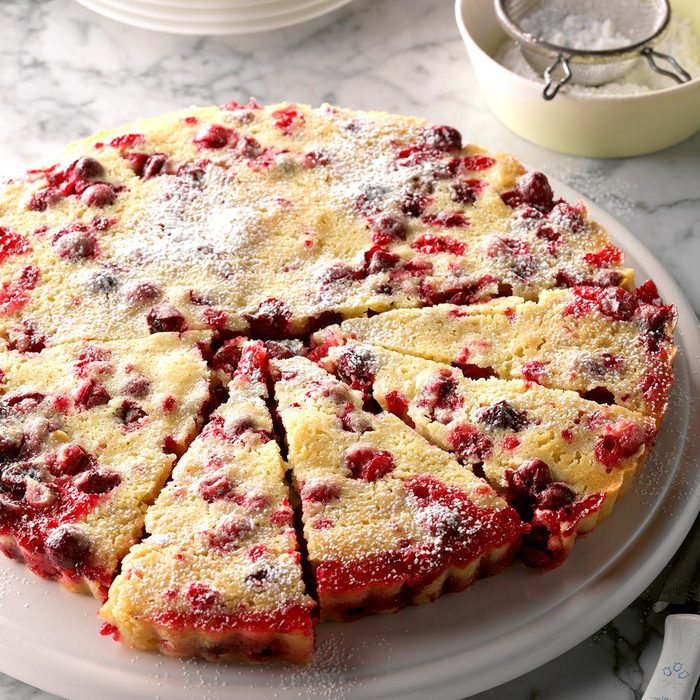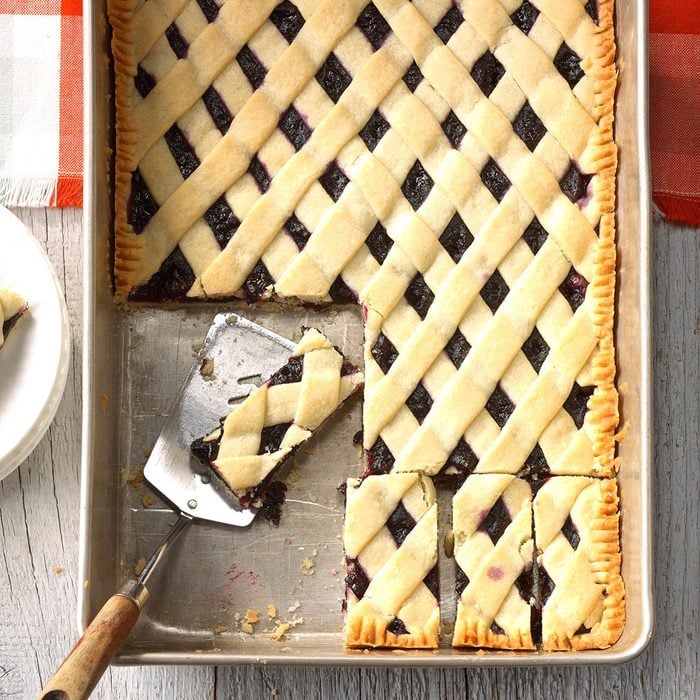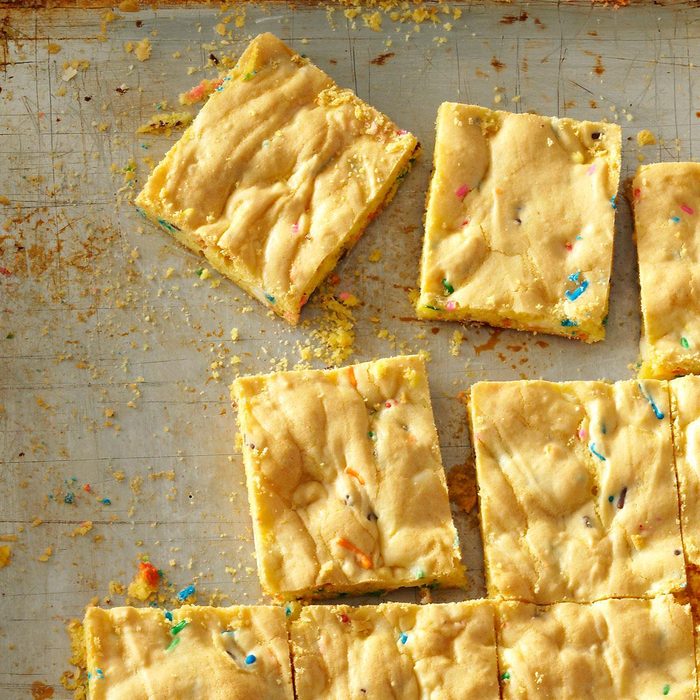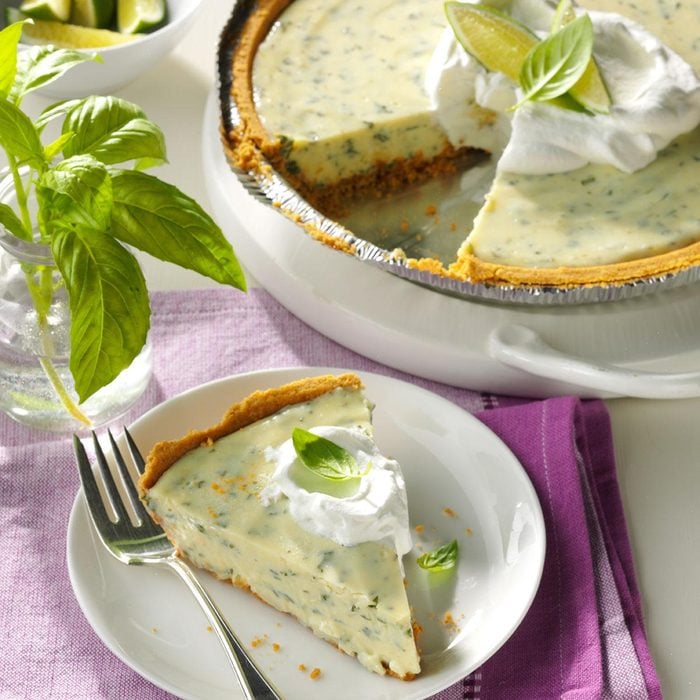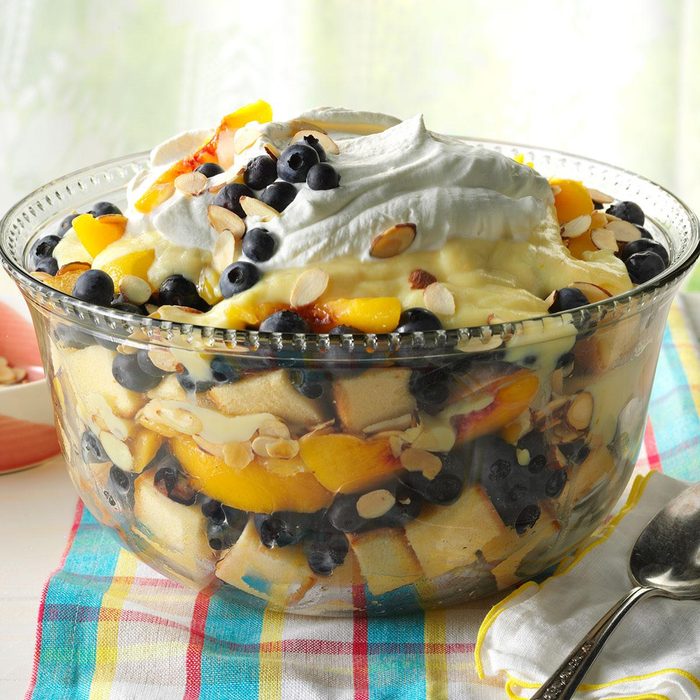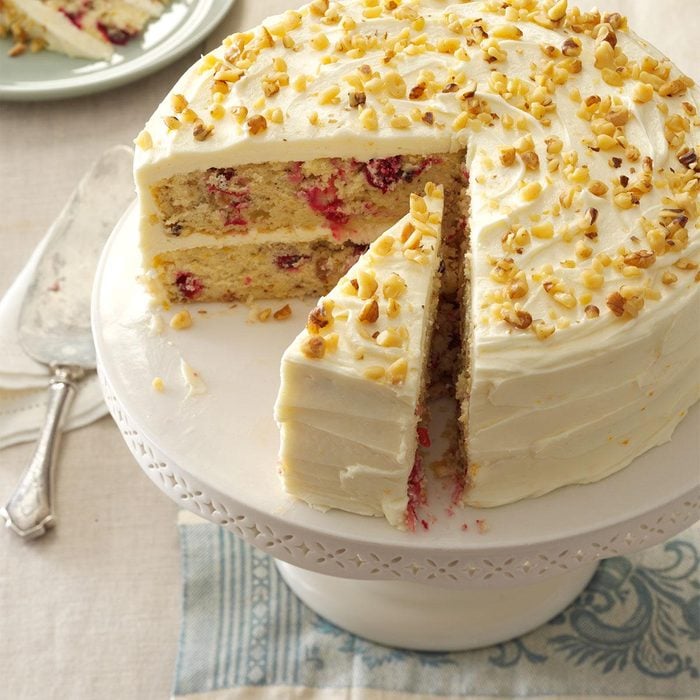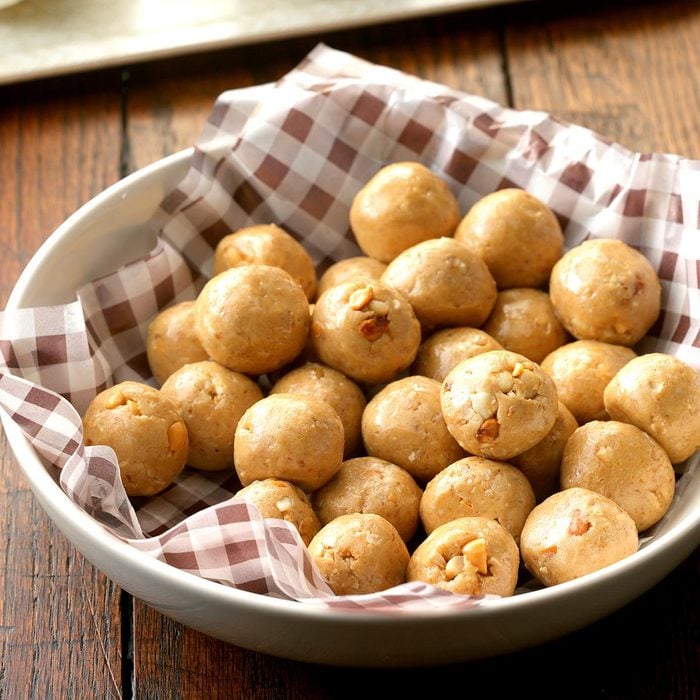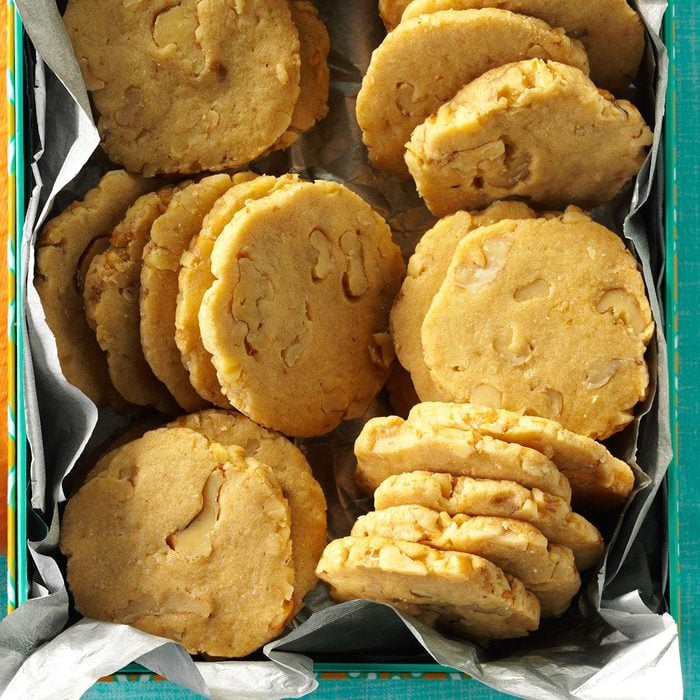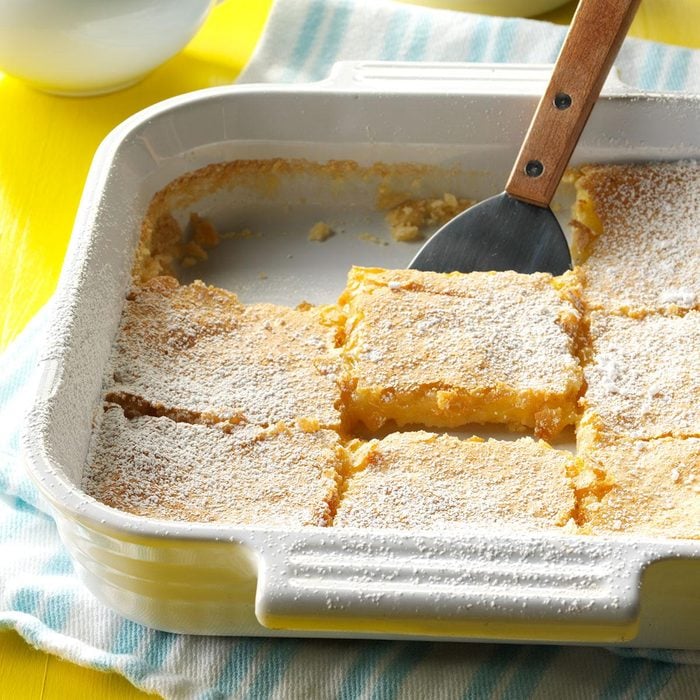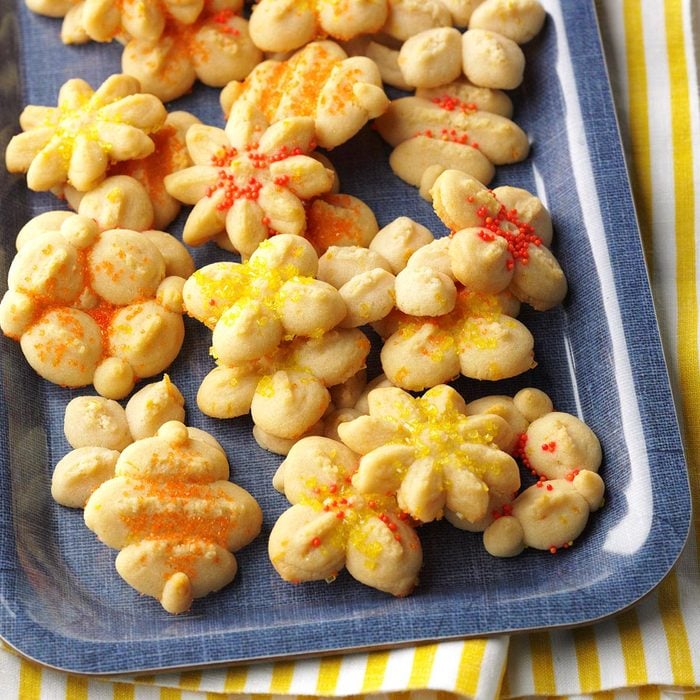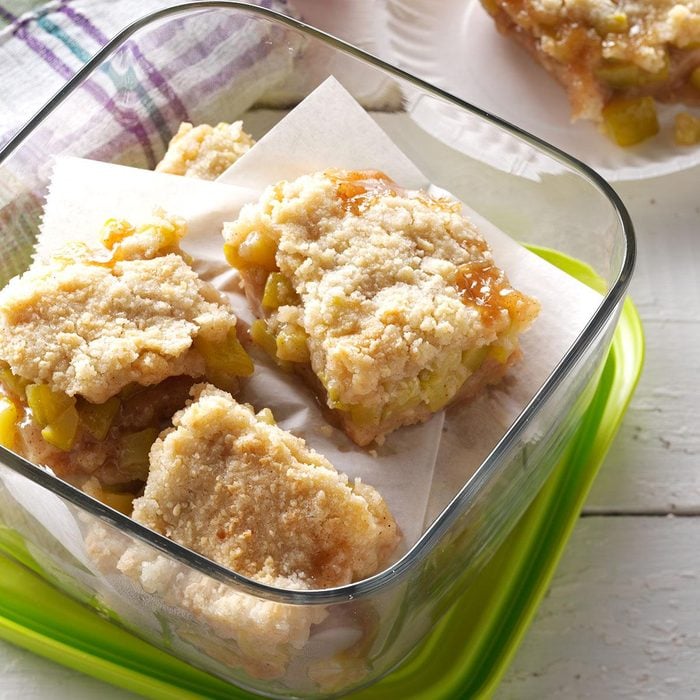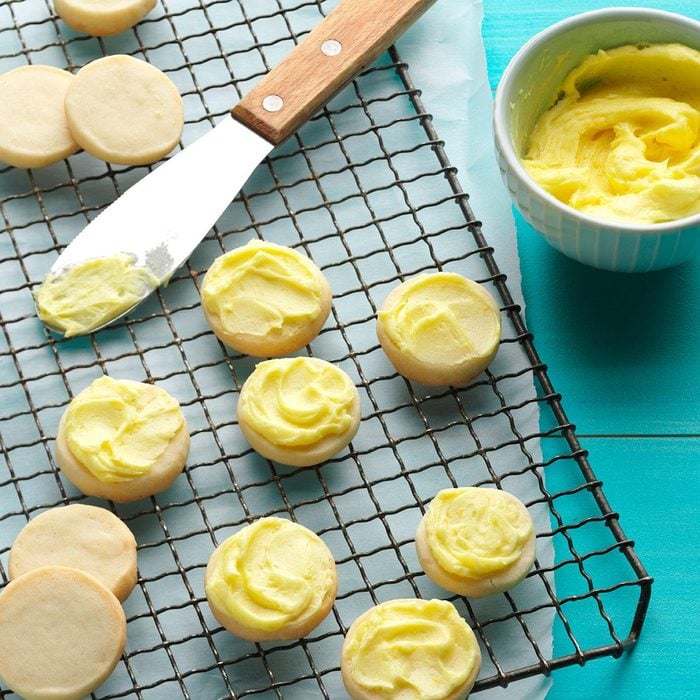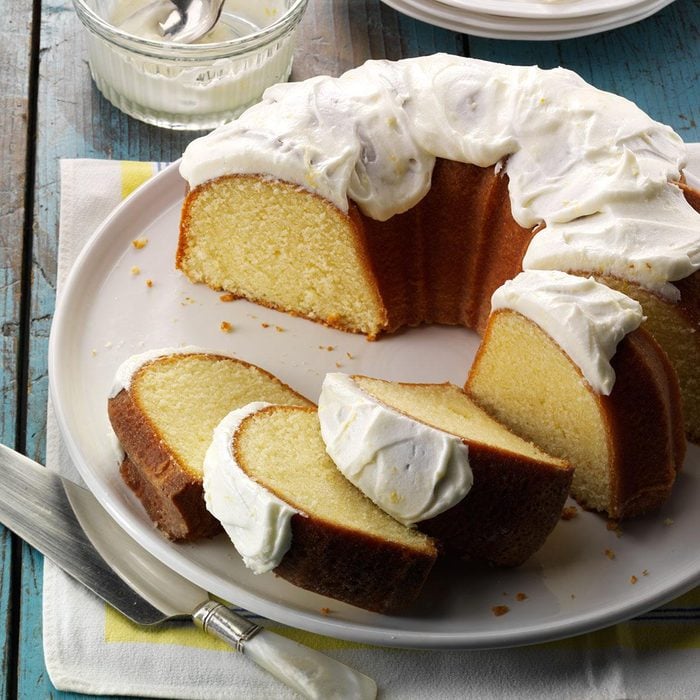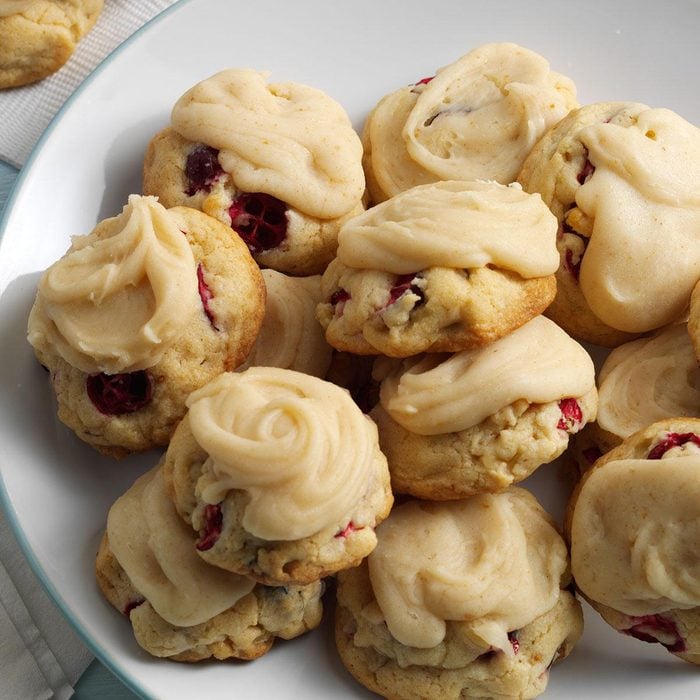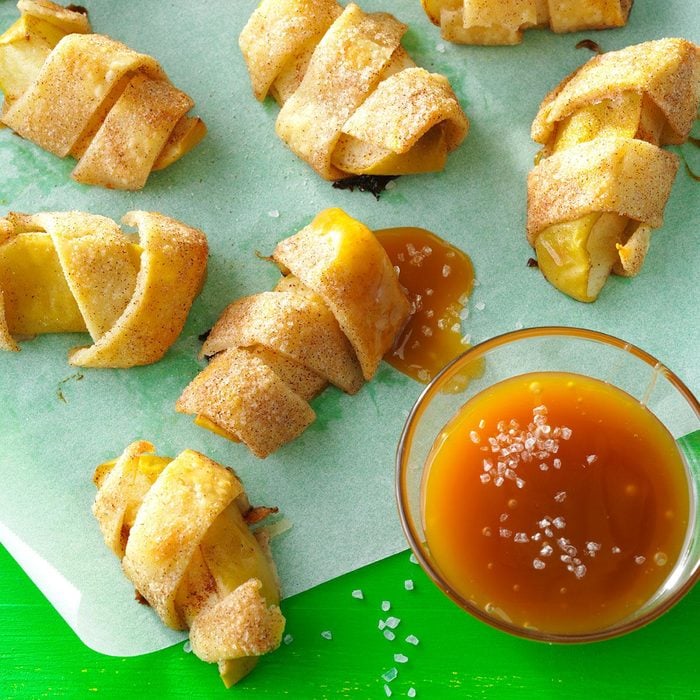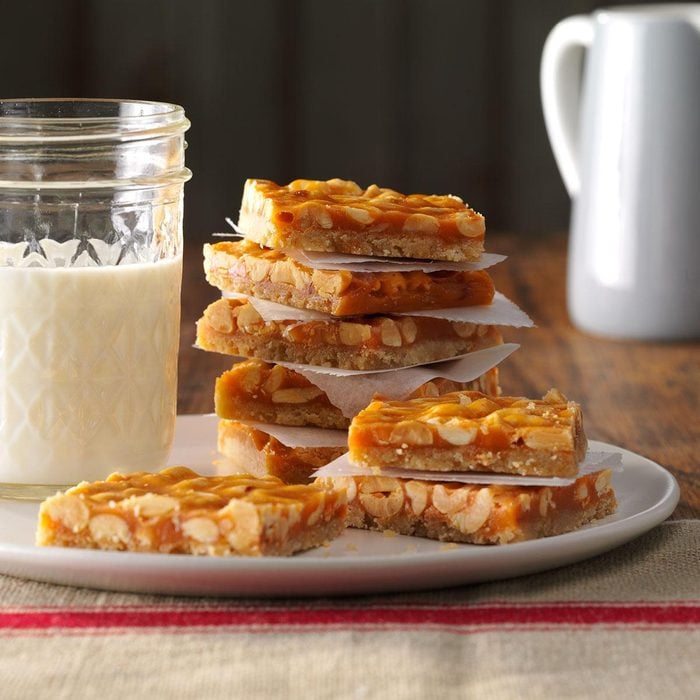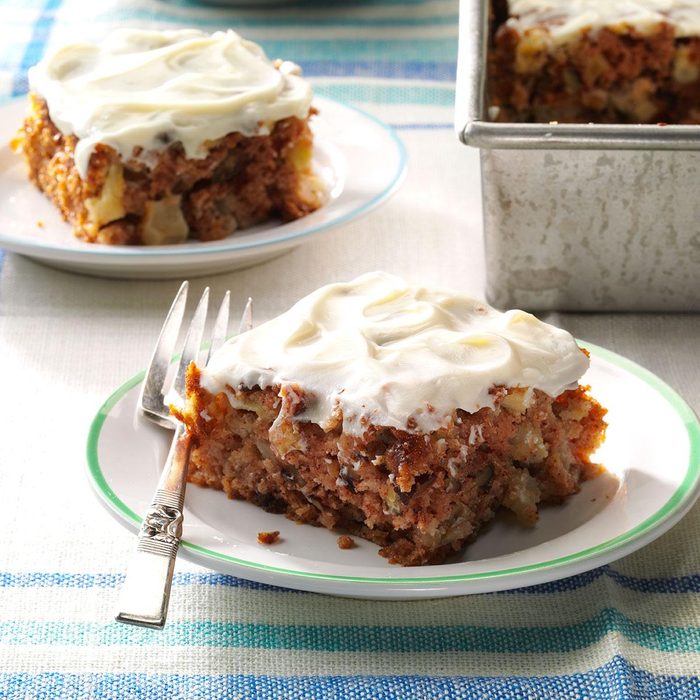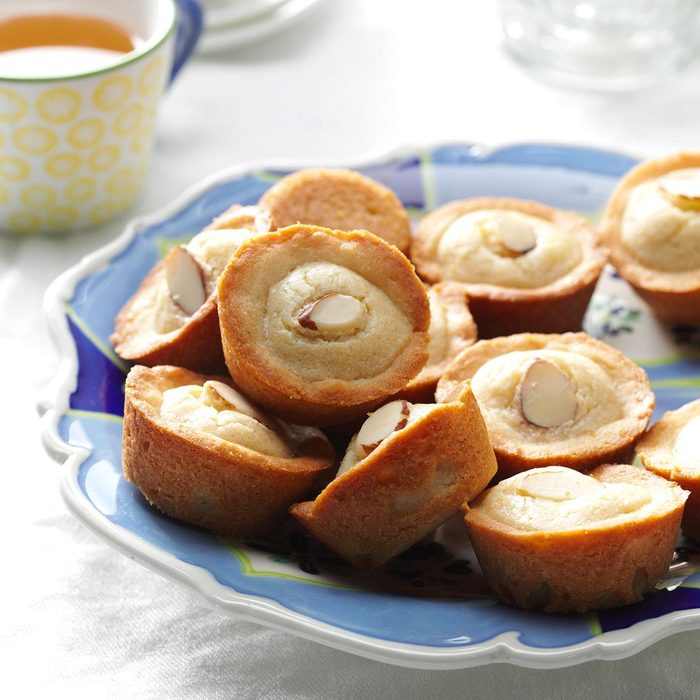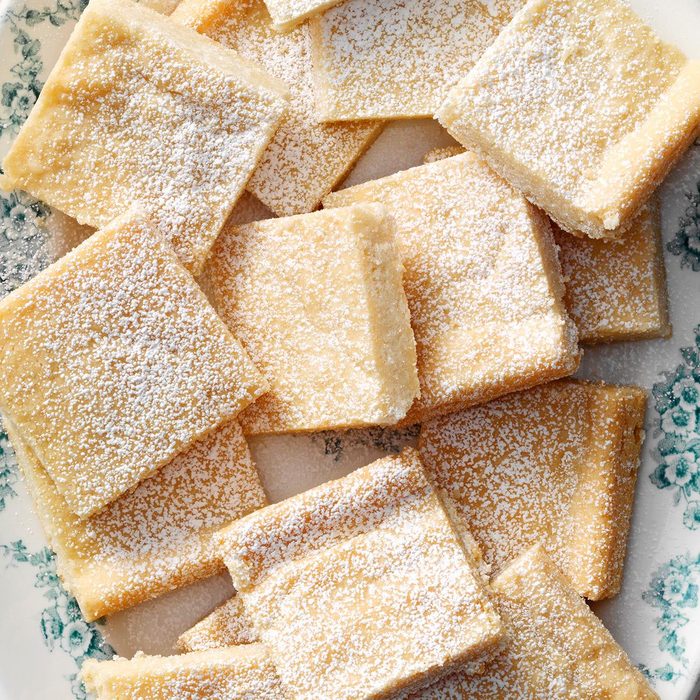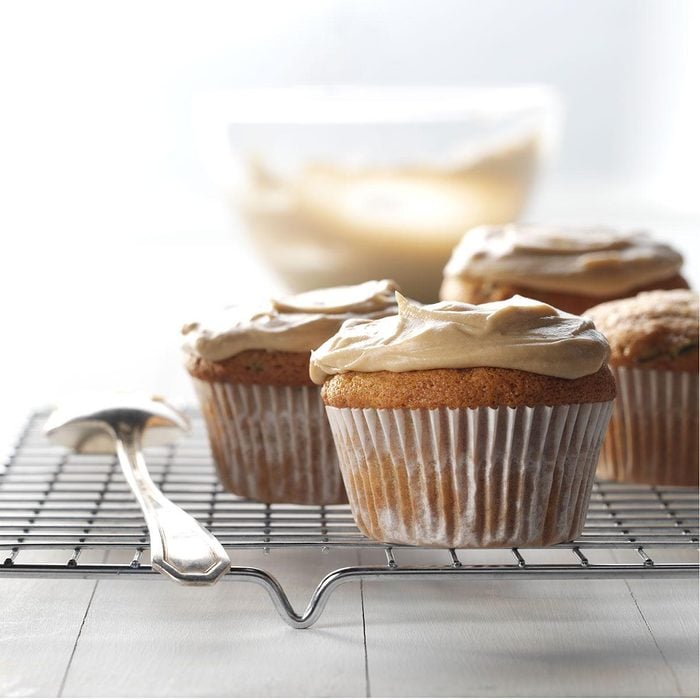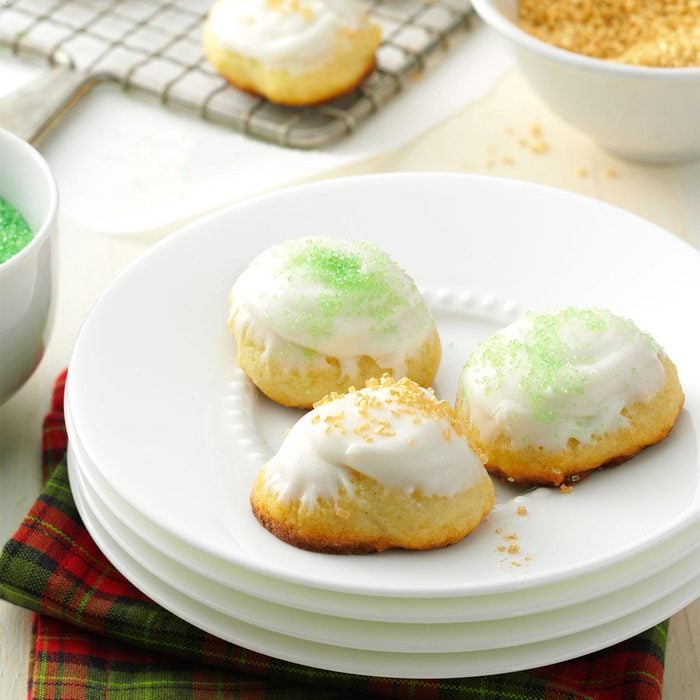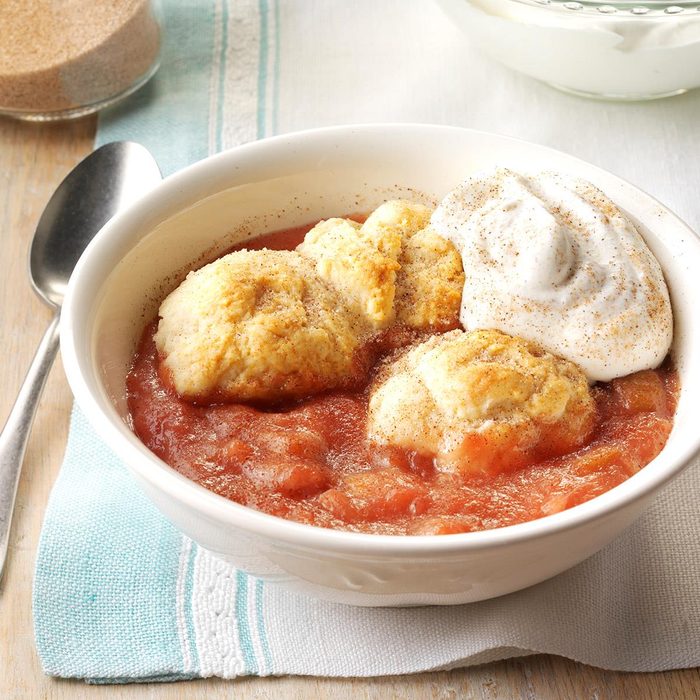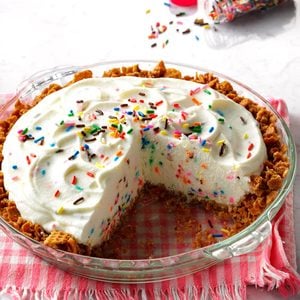 Taste of Home
Taste of Home
Sugar cone crust makes a pie that tastes like birthday cake when you add a colorful, creamy no-bake confetti filling. —Gina Nistico, Taste of Home Food Editor
Get Recipe
Grapefruit Yogurt CakeWe eat grapefruit for breakfast and in winter fruit salads—why not for dessert? Here's a sweet-tart cake that's easy, delicious and one of a kind. It's healthier too! —Maiah Miller, Montclair, Vermont
Pecan Pumpkin DessertI always make this treat for Thanksgiving. A friend gave me the recipe, and I've since shared it with many others. —Sue Williams, Mount Holly, North Carolina
Blueberry Cheesecake Ice CreamBlueberries? Love them. Blueberry cheesecake? Even better. Blueberry cheesecake ice cream? Now you’re talking!
Carrot Cake with Cream Cheese FrostingCinnamon, nutmeg, carrots and a creamy, tangy frosting make this classic carrot cake a winner.
Peanut Butter Cream PieThis no-bake peanut butter pie is rich, decadent and packed with as much peanut butter flavor as possible. The hardest part of the recipe is waiting for it to chill overnight!
Raspberry Custard KuchenBack where I grew up in Wisconsin, people have been baking this German treat for generations. We love it for breakfast or as a special dessert. It's no fuss to fix and impressive to serve. —Virginia Arndt, Sequim, Washington
Apple-Pumpkin Upside-Down CakeWe love the combination of classic fall fruits in this cake. I bake the apples on the bottom to keep them plump and moist, then flip the cake so they're on top. This is best served warm with vanilla ice cream, but we enjoy digging in any time of day. —Christina Yahraes, San Francisco, California
Grilled Fruit Phyllo TartThis tart was a hit at my friend's baby shower. It reminds me of a fruit salad that my mother used to make with cream cheese and whipped topping. Everyone loved the flaky crust, and the bright colors make it a pretty addition to any spread. —Laura McAllister, Morganton, North Carolina
Down East Blueberry BuckleThis buckle won a contest at my daughter’s college. The prize was four lobsters, but the real reward was the smile on our daughter’s face. —Dianne van der Veen, Plymouth, Massachusetts
Macaroon-Topped Rhubarb CobblerCrumbled macaroons are a surprising addition to this cobbler’s topping. We love that you can make the sweet treat in a baking dish or a cast-iron skillet.
—Taste of Home Test Kitchen
Palmier CookiesIt takes just two ingredients to make these impressive but easy-to-do French pastries, which are often called palm leaves. —Taste of Home Test Kitchen, Milwaukee, Wisconsin
Marshmallow-Almond Key Lime PieSummer is peak season for Key limes—a must for this pie’s distinctive sweet-tart flavor. Unlike other Key lime pies, mine has a smooth marshmallow layer on top. This makes it stand out as a crowd favorite. —Judy Castranova, New Bern, North Carolina
Cherry Pie BarsWhip up a pan of these festive bars in just 20 minutes with staple ingredients and cherry pie filling. Between the easy preparation and the pretty colors, they're destined to become a holiday classic. —Jane Kamp, Grand Rapids, Michigan
Oatmeal Cream Pie RecipeWe love foods that remind us of childhood, like the chewy oatmeal cream pies stashed in our lunch boxes on lucky days.
German Apple StrudelThis gorgeous strudel has just what you crave this time of year: thin layers of flaky crust and lots of juicy apples. —Darlene Brenden, Salem, Oregon
Blueberry Zucchini SquaresI saw a bar recipe using apple and lemon zest on a muffin mix. I tried it from scratch with shredded zucchini and fresh blueberries instead. It’s a nifty combo. —Shelly Bevington, Hermiston, Oregon
Amaretto Ricotta CheesecakeThere's a good reason why a relative handed this cherished recipe down to me. It's a keeper! The amaretto and ricotta make for a truly unique dessert. —Isabel Neuman, Surprise, Arizona
Orange Pistachio CookiesI had never tried pistachios until I visited a friend who served me these cookies. I was in love! I made the recipe my own, and now my family can't get enough of them. —Lorraine Caland, Shuniah, Ontario
Cream PieThis creamy pie recipe, made with whipped cream and cream cheese inside a buttery graham cracker crust, could not be easier.
Creme de Menthe CupcakesWe use creme de menthe liqueur (the term means "mint cream" in French) to add a cool touch to these impressive mascarpone-frosted cupcakes. —Keri Whitney, Castro Valley, California
Grilled Figgy PiesDelicious figs combined with maple, walnuts and creamy mascarpone make a decadent treat that's easy to enjoy at a backyard cookout. These unique hand pies always disappear quickly. —Renee Murby, Johnston, Rhode Island
Nutty Cheesecake SquaresI grew up on a farm and have had a lot of good recipes handed down to me. This is one of my favorite desserts to serve when guests come over or at family gatherings and church suppers. —Ruth Simon, Buffalo, New York
lattlat
Blackberry Frozen YogurtYou could also use boysenberries, raspberries or strawberries for this delicious dessert. — Rebecca Baird, Salt Lake City, Utah
Lemon Orange CakeI like to bake this lovely three-layer lemon and orange cake instead of a more traditional pie for Thanksgiving. It has that tangy Florida citrus flavor and isn't any more difficult to make than a two-layer cake. —Norma Poole, Auburndale, Florida
Cake & Berry Campfire CobblerThis warm Dutch oven cobbler is one of our favorite ways to end a busy day of fishing, hiking, swimming or rafting. It's yummy with ice cream—and so easy to make! —June Dress, Boise, Idaho
Spiced Pumpkin TiramisuI added pumpkin and subtracted some of the coffee flavor in a tiramisu I developed for a special holiday dinner. A new Christmas tradition was born! —Heather Clary, Downingtown, Pennsylvania
Rustic Honey CakeServe this sweet, moist honey cake with ripe berries and a sprinkle of crunchy pistachios.
Texas Pecan PralinesMy pecan praline recipe is special to me for I received it from my mother, who was an excellent cook! I also am a Texas Aggie Mom and I use pecans from a South Texas Aggie grower that our Aggie Mom's club has purchased from for many years. The quality is outstanding and far better than you will find in any grocery store. —Carol Jones, Blue Ridge, Texas
Easy Tres Leches CakeWhen we come across a cake recipe described as “easy” that's also a contest-winner, you know we'll be running out to get the ingredients! Thankfully, this easy tres leches cake cuts down on a few ingredients by starting with a simple box of cake mix.
Cranberry CheesecakeEvery year when the cranberries are harvested, my family looks forward to eating this cheesecake. —Nairda Monroe, Webberville, Michigan
Walnut-Filled PillowsThese tender cookie pillows, filled with a delicious walnut mixture, are my husband's favorite. He says it wouldn't be Christmas without them. —Nancy Kostrej, Canonsburg, Pennsylvania
Lemon Whirligigs with RaspberriesGolden whirligigs with a tart lemon flavor float on a ruby raspberry sauce in this delectable dessert. I love serving it to guests. My children also like it made with blackberries. —Vicki Ayres, Wappingers Falls, New York
Not-Fried Ice Cream CakeWe created this ice cream cake to mimic the popular dessert in many Mexican restaurants without the deep frying. It’s a no-fuss treat that feeds a crowd, and it’s conveniently made ahead. —Taste of Home Test Kitchen
Spiced Peach PuffsWe always made cream puffs for special occasions when I was growing up in our family of seven. Sometimes we used a custard filling, but this version with whipped cream and peaches is the best. —Agnes Ward, Stratford, Ontario
Freezer Strawberry Shortbread DessertWhen I’m planning party menus, I appreciate dessert recipes like this; you can make and freeze it up to two weeks before serving. A refreshing slice is welcome after a big meal.—Cassie Alexander, Muncie, Indiana
Mini Peanut Butter Sandwich CookiesPeanut butter lovers go nuts for these rich little sandwich cookies. On a hot day, sandwich ice cream between the cookies instead of frosting. It cools you right down. —Keri Wolfe, Nappanee, Indiana
Raisin Date Bread PuddingAll my leftover bread ends (raisin bread is a favorite in this house) and buns go in the freezer. Then, when I've stashed away enough, I whip up a batch of this pudding. It's an all-occasion dish—I've made it for holidays, potlucks, picnics...for any occasion or no occasion! —Dawn Green, Hopkins, Michigan
Walnut Toffee TartI usually serve this scrumptious tart on Christmas and New Year’s Day. It really showcases walnuts and is so impressive to serve. —Patricia Green, Yuba City, California
Blueberry Graham DessertWhen you're short on time but long for cheesecake, try this fruity dessert. Ricotta and cream cheeses give every bit as much flavor as cheesecake without the effort. Instead of making individual servings, you could layer the ingredients in a glass serving bowl. —Taste of Home Test Kitchen
Creamy Pineapple PieCreamy pineapple pie is a light and refreshing dessert that's quick to make and impressive to serve. This is one of our favorite ways to complete a summer meal. —Sharon Bickett, Chester, South Carolina
Berry White Ice PopsNothing says summer like an ice pop. Kids and adults alike love this fruit-filled version. —Sharon Guinta, Stamford, Connecticut
Almond Cherry CobblerThis bubbling cherry cobbler is one of my favorite dishes. Serve warm with vanilla ice cream or whipped cream. —Melissa Wagner, Eden Prairie, Minnesota
Cheesecake with Berry SauceThis creamy cheesecake is a family tradition; I've even shipped it to my daughter as a special treat. Using frozen seasonal berries, it's an excellent dessert any time of year. —Jeanette Volker, Walton, Nebraska
Lemon Tart with Almond CrustOur state produces an abundance of lemons, and everyone is always looking for new ways to use them. This beautiful tart is my delicious solution to the excess-lemon problem! —Lois Kinneberg, Phoenix, Arizona
Frozen Hawaiian PieCool summer pies are one of Mom's specialties. This version offers pineapple, maraschino cherries and walnuts that are folded into a fluffy filling. It's an easy yet tempting no-bake dessert. —Jennifer Mcquillan, Jacksonville, Florida
Orange CookiesSoft, tender and filled with bright, zippy orange juice and zest, our orange cookies with a homemade icing are sure to please—and pucker!
Rhubarb Mandarin CrispAn attractive dessert, this crisp is also a popular breakfast dish at our house, served with a glass of milk rather than topped with ice cream. Because it calls for lots of rhubarb, it's a great use for the bounty you harvest. —Rachael Vandendool, Barry's Bay, Ontario
Almond Raspberry StarsThe first Christmas that I baked these, I ended up quickly making a second batch! The whole family enjoyed them. —Darlene Weaver, Lebanon, Pennsylvania
Peanut Butter Popcorn BallsFriends and family are always happy to receive these tasty peanut butter popcorn balls. I love making them as well as eating them! —Betty Claycomb, Alverton, Pennsylvania
Carrot FruitcakeEven those who don't care for fruitcake love this special holiday dessert. It's a fun way to dress up that old favorite, carrot cake. Try it—your friends and family will agree. —Ann Parden, Chunchula, Alabama
Rustic Fruit TartMy husband and I love pie, but we can't eat a whole 9-inch pie by ourselves. So I make these easy tarts using rhubarb and raspberries picked at home. Sometimes I substitute apples, peaches or our garden blueberries for the rhubarb. —Naomi Olson Hamilton, Michigan
Toffee-Pear Crisp Bread PuddingMy son loves pear crisp, but one night I was making bread pudding. He asked if I could make both. I compromised by combining two desserts into this one dish. It's absolutely fantastic! —Kurt Wait, Redwood City, California
Cranberry-Orange TrifleI make this showstopper for many occasions, slightly changing—or adding—ingredients. I sometimes add toasted coconut between the layers. —Raymonde Bourgeois, Swastika, Ontario
Fluffy Cranberry DelightThis was originally my daughter's recipe, and she or I will make it for one or more of our holiday get-togethers. It can be served as a fruit salad along with the meal or as a light dessert. It's particularly pretty in a cut-glass bowl on a buffet. —Ruth Bolduc, Conway, New Hampshire
Lemon SnowdropsI save my snowdrop cookies for special occasions. The crunchy, buttery sandwich cookie has a puckery lemon filling. —Bernice Martinoni, Petaluma, California
Lemon Strawberry ShortcakeEnjoy the signature tastes of summer with this bright and sweet lemon strawberry shortcake, heaped with fresh berries and whipped cream.
Grilled Honey-Balsamic Glazed FruitOne summer my mother-in-law made us grilled peaches basted with a sweet and tangy sauce. These are so good I'm always tempted to eat the whole batch. —Kristin Van Dyken, West Richland, Washington
Peanut BarsWith peanut butter in both the batter and frosting, plus chopped nuts sprinkled on top, these treats have triple the goodness. It's one of my favorite recipes for peanut bars. —Ren Reed, Tavares, Florida
Birthday Cake Freezer PopsOn my quest to find birthday cake ice cream—my favorite flavor—I came up with these easy ice pops. Now, instead of going to the store whenever a craving hits, I just head to my freezer. —Dawn Lopez, Westerly, Rhode Island
Pecan Butter TartsI searched for the perfect butter tart for ages. After many attempts, I discovered this favorite that begs for a scoop of ice cream on top. —Susan Kieboam, Streetsboro, Ohio
Glazed Lemon Chiffon CakeDrizzled with sweet-tart lemon glaze, this fluffy cake is a real treat. —Rebecca Baird, Salt Lake City, Utah
Easy Crunch Berry PieThis is a fresh, simple approach to making a company-worthy pie. The playful Cap’n Crunch cereal crust is fun to bite into, and it’s the perfect complement to a mixed berry no-bake filling. —Taste of Home Test Kitchen
Sweet Potato Cheesecake BrowniesIf you're looking for something other than pumpkin, these sweet potato bars are a yummy alternative. Make them ahead—they're even better refrigerated overnight. —Debbie Glasscock, Conway, Arkansas
Vanilla Ice Cream RecipeOur vanilla ice cream recipe is perfect for those who have never made ice cream in their life, as well as ice cream aficionados looking for a go-to, tried-and-true recipe to keep in their back pocket.
Caramel Pecan CheesecakeI created this creamy cheesecake using two of my favorites—caramel and pecans. It is a stunning cake and rivals any I've tasted. —Deidre Sizer, Cedarville, Ohio
Cranberry-Filled Orange Pound CakeI made this for a holiday dinner with my family. Everyone loved the cran-orange flavor and the sweet glaze drizzled on top. For a fun variation, include 2/3 cup flaked sweetened coconut when adding the orange juice to the batter, and sprinkle the finished cake with toasted coconut. —Patricia Harmon, Baden, Pennsylvania
Healthy Apple CrispThis easy dish is a tradition in my family. It's as quick as a boxed cake mix but it's a healthier dessert choice. It's ideal in fall when it seems that everyone has a bag or two of fresh apples to give away! —Terri Wetzel, Roseburg, Oregon
Oatmeal Cranberry CookiesChewy and sweet, oatmeal cranberry cookies balance tart cranberries and zesty orange with indulgent white chocolate for an anytime treat.
Strawberry-Rhubarb CobblerMom's yummy cobbler is a truly wonderful finale to any meal. This family favorite is sweet and tart, chock-full of berries and rhubarb, and the thick crust is so easy to make. —Susan Emery, Everett, Washington
Sour Cream Apple PieA cool, creamy version of the original, this delicious dessert is the perfect finish to a satisfying summer meal. Its crumbly topping and smooth apple filling are crowd-pleasers! Be prepared to serve seconds. —Sharon Bickett, Chester, South Carolina
Kentucky Butter CakeLook no further than Kentucky butter cake for a fluffy, buttery cake with an excellent crumb and a vanilla-almond butter sauce that permeates every bite.
Mini Cherry CheesecakesThese little cheesecakes make a fun dessert that's just right for cooks who don't have a lot of time for fussy recipes. Plus, you get to eat a whole mini cheesecake yourself! —Kay Keller, Morenci, Michigan
Rolled Oat CookiesI like to keep some of this dough in the freezer at all times since it's so handy to slice, bake and serve at a moment's notice. These wholesome cookies are super with a cup of coffee - in fact, we occasionally grab a few for breakfast when we're in a hurry.
-Kathi Peters, Chilliwack, British Columbia
Rhubarb Custard BarsOnce I tried these rich, gooey bars, I just had to have the recipe so I could make them for my family and friends. The shortbread-like crust and the rhubarb and custard layers inspire people to find rhubarb that they can use to fix a batch for themselves. —Shari Roach, South Milwaukee, Wisconsin
Banana Skillet Upside-Down CakeMy grandmother gave me my first cast iron skillet, and I've been cooking and baking with it ever since. Sometimes I add drained maraschino cherries to this banana skillet dessert and serve it with a ice cream. —Terri Merritts, Nashville, Tennessee
Cranberry-Pear Apple CrispWith its crunchy golden topping and flavorful blend of tart cranberries and sweet apples and pears, this dessert makes a refreshing finish to heavy winter meals. —Lois Gelzer, Standish, Maine
Raspberry RibbonsI make these attractive, buttery cookies to serve at our remote guest lodge, and all the cooks in the kitchen are addicted to them! —Patsy Wolfenden, Golden, British Columbia
Apple Dumpling BakeI received this recipe for baked apple dumplings with Mountain Dew from a friend of mine, then tweaked it to suit my family's tastes. The soda is definitely the secret ingredient in this rich apple dessert. —Chris Shields, Monrovia, Indiana
Lime TartThis lime tart is a prettier version of Key lime pie, complete with a delicious graham cracker crust and tangy whipped topping.
Gingerbread Cookies with Buttercream IcingWhen it’s time to start the cookie-baking season, this recipe always kicks off the festivities. My mother-in-law first shared it with me, but it’s too good to keep to myself! You can tint the buttery gingerbread cookie icing a cheery pink or green and pipe it on with a decorating tip. —Ann Scherzer, Anacortes, Washington
Daisy's FruitcakeI added pecans and candied fruits to an apple cake recipe for my Texan take on traditional English fruitcake. —Daisy Corene McHorse, San Saba, Texas
Squash Custard PieAcorn squash has been a favorite of mine since I was little and my mother baked it with sugar and cinnamon. This particular pie was something I improvised. We love pumpkin pie, but had fresh squash in excess. So I came up with this new variation! It's good to take to potlucks, to pie or
cake walks at school, or to serve as a different dessert for Thanksgiving or Christmas. —Mary Kelly, Hopland, California
Easy Pistachio Tube CakeMixes make this light cake easy, and a fluted tube pan gets it holiday party-ready. Go for the pistachios on top—the extra crunch is worth it. —Dina Crowell, Fredericksburg, Virginia
Cranberry PieThe tart-sweet filling and a perfect, flaky crust make this cranberry pie a bake not to be missed.
Cherry DivinityIt's just not a party without these light and airy confections on my dessert platter. The recipe is versatile because you can replace the cherry gelatin with any flavor that suits your taste. —Crystal Ralph-Haughn, Bartlesville, Oklahoma
Blackout Peach Bread PuddingI bake several times a week so my kids have homemade desserts. We lost power in a storm, so I used the grill to invent “blackout” pudding. —Augustina Zaccardi, Eastchester, New York
Key Lime CupcakesI made these light, tangy cupcakes on a chilly day to remind me of our vacation in southern Florida, where Key lime pies are star attractions. —Jennifer Gilbert, Brighton, Michigan
Rum Raisin Creme BruleeInspired by a favorite ice cream flavor, I created this make-ahead recipe to free up some time in the kitchen. You can also serve this as a custard if you choose to not caramelize the top. —Eleanor Froehlich, Rochester, Michigan
Kolacky CookiesA flaky cream-cheese dough makes these walnut-filled kolacky cookies a joy to bite into. Make these when you want to wow your friends or when your family wants something sweet during a holiday.
Baklava TartletsWant a quick treat that's delicious and easy to make? These tartlets will do the trick. You can serve them right away, but they're even better after chilling for about an hour in the refrigerator. —Ashley Eagon, Kettering, Ohio
KourabiedesWhen a cookie recipe calls for a pound of butter and confectioners’ sugar, you know it’s going to be a good one. Our kourabiedes are living proof.
Deep-Dish Apple PieThis deep-dish apple pie is a winner! The crust is so flaky and the filling is sure to please everyone. —Salem Cross Inn, West Brookfield, Massachusetts
Ice Cream KolachkesThese sweet pastries have Polish and Czech roots and can also be spelled "kolaches." They are usually filled with poppy seeds, nuts, jam or a mashed fruit mixture. The ice cream is a unique twist on traditional kolachkes, and it's simplest to use a square cookie cutter to cut the dough. —Diane Turner, Brunswick, Ohio
Nantucket Cranberry TartWhile everyone is enjoying a bountiful meal, this eye-catching tart can be baking to perfection in the oven. The pretty holiday dessert calls for very few ingredients, and it's a snap to assemble. —Jackie Zack, Riverside, Connecticut
Blueberry Lattice BarsSince our area has an annual blueberry festival, my daughters and I are always looking for amazing new recipes to enter in the cooking contest. These lovely bars won a blue ribbon one year. —Debbie Ayers, Baileyville, Maine
Easy Cake Mix BarsI take this dessert to work for Friday pick-me-ups. It's one of my favorite yellow cake bar recipes. I love to share them because they're so easy to eat, easy to make and easy on the wallet. —Amy Rose, Ballwin, Missouri
Peach Cobbler Dump CakeHomemade peach cobbler dump cake uses shortcut ingredients—canned peaches and a cake mix—to deliver a cozy, tender cake that's impossible to serve without a scoop of ice cream.
Lime Basil PieThis sweet lime and basil dessert has a unique taste, plus less calories and fat than the traditional Key lime pie. —Samara Donald, Redmond, Washington.
Buttermilk Cake with Caramel IcingThis fabulous cake and caramel frosting are so tender, it melts in your mouth. It's been a family favorite since the '70s and it goes over really well at church potluck meals. —Anna Jean Allen, West Liberty, Kentucky
Peach & Blueberry TrifleThis crowd-pleasing summer trifle recipe can be made the night before. I love that you can be flexible with the ingredients. Add any in-season fruit you like! —Raymonde Bourgeois, Swastika, Ontario
Blueberry Ice CreamIf you churn only one homemade ice cream this summer, it should be this blueberry ice cream. Each scoop has a subtle tart, floral flavor and intense purple hue.
Scottish ShortbreadMy mother, who is of Scottish heritage, passed this shortbread recipe, along with other favorite recipes, on to me. When I entered this treat at our local fair, it won a red ribbon. —Rose Mabee, Selkirk, Manitoba
Strawberry Pretzel SaladNeed to bring a dish to pass this weekend? This make-ahead strawberry pretzel salad will disappear quickly at any potluck. —Aldene Belch, Flint, Michigan
Cranberry Layer CakeI adapted a Bundt cake recipe to create this layer cake. Cranberries, walnuts and homemade frosting make it taste so delicious that you'd never guess it starts with a convenient cake mix. —Sandy Burkett, Galena, Ohio
No-Bake Peanut Butter TreatsPerfect for road trips, these peanut butter oatmeal balls won’t stick to your hands. Keep them in the refrigerator for portable snacks. —Sonia Rohda, Waverly, Nebraska
Black Walnut CookiesThese walnut cookies combine a rich, nutty flavor with a tender, buttery texture. Perfect for any occasion, they can be easily adapted to gluten-free, making them a delightful treat for everyone.
Easy Lemon BarsThis delightful lemon bar recipe is from my mother's file. I've been serving it for many years. They has a wonderful tangy flavor, and they're always a hit. The color and shape make them a nice addition to a platter of cookies. —Etta Soucy, Mesa, Arizona
Cherry-Pecan Icebox CookiesDuring the holiday season, I keep a roll of dough for these crisp cookies in the freezer. It's nice to offer unexpected company a home-baked treat. —Betye Dalton, Tupelo, Oklahoma
Brown Sugar Pound CakeThis tender pound cake is the first one I mastered. You'll want to eat the browned butter icing by the spoonful. It tastes like pralines. —Shawn Barto, Winter Garden, Florida
Orange Spritz CookiesBrown sugar gives these spritz cookies a lovely light caramel tint. This variation has a rich buttery shortbread taste and texture with a hint of orange flavor. They are a delightful addition to my holiday cookie tray.
-Sean Fleming, St. Charles, Illinois
Zucchini Dessert SquaresWe planted one too many zucchini plants a few summers ago and harvested a lot of zucchini that year. I was looking for ways to use them, and this delicious dessert is the result. —Nancy Morelli, Livonia, Michigan
Lemon Meltaway CookiesThese lemon meltaway cookies are soft, chewy and thanks to confectioners' sugar and a few other key ingredients, they'll melt in your mouth. Better yet, they're easy to make and relatively quick even with the required chill time. Serve alone or with your favorite ice cream.
Lemon Pound CakeCitrus trees grow abundantly in California, and I'm always looking for new recipes which use the fruit from the orange and lemon trees in my yard. This lemon pound cake is one of my favorites! My mother passed this recipe down to me. —Richard Killeaney, Spring Valley, California
Frosted Cranberry Drop CookiesI started making these treats after tasting a batch my friend whipped up. I immediately requested the drop cookie recipe and have been baking them by the dozens ever since. The icing is an ideal complement to the tart berries in the cookies. —Shirley Kidd, New London, Minnesota
Butter Pecan FudgeToasted pecans add a nutty crunch to this creamy fudge, perfect for holiday giving. People always seem to rave about its wonderful caramel flavor. —Pam Smith, Alta Loma, California
Holiday Almond TassiesI make so many of these fancy tassies, I use up a 7-pound container of almond paste every year! They’re one of my family’s holiday favorites. —Donna Westhouse, Dorr, Michigan
Glazed Maple Shortbread CookiesWhenever I visit friends in Lutsen, Minnesota, I make sure to buy maple syrup there because I think it's even better than in Quebec. These delicious cookies can be decorated with sprinkles but they're just fine as is.—Lorraine Caland, Shuniah, Ontario
Lemon Supreme PieA friend and I often visit a local restaurant for pie and coffee. When they stopped carrying our favorite lemon supreme pie, I got busy in the kitchen and created this version, which we think tastes even better! The combination of the cream cheese and tart lemon is wonderful. —Jana Beckman, Wamego, Kansas
Apple Pie BitesThese apple pie bites are fun for kids to make. Simply wrap strips of pastry around apple wedges and shake on some cinnamon-sugar. Then just bake and watch them disappear! —Taste of Home Test Kitchen
Peach-Blueberry Crumble TartThis easy-to-prepare tart is a family favorite, fresh out of the oven or at room temperature with a scoop of vanilla ice cream. —James Schend, Pleasant Prairie, Wisconsin
Chewy Salted Peanut BarsMy rich bars are studded with the all-American peanut. I like to think famed peanut farmer Jimmy Carter would approve. —Ann Marie Heinz, Sturgeon Bay, Wisconsin
Cranberry Lemon SandwichesI bake cookies all year long, so my friends and family call me the "Cookie Lady"! Whenever I bake these for Christmas, I make three batches...one to keep at home for my husband and two to give as gifts. —Patricia Michalski, Oswego, New York
Gran's Apple CakeMy grandmother occasionally brought over this wonderful cake warm from the oven. The spicy apple flavor combined with the sweet cream cheese frosting made this recipe one that we treasured. Even though I've lightened it up, it's still a family favorite. —Lauris Conrad, Turlock, California
Almond Tea CakesWhen I have time—usually in the winter—I love to bake. I make these tea cakes every Christmas, double the recipe and freeze half for later. —Janet Fennema Ringelberg, Troy, Ontario
Buttery 3-Ingredient Shortbread CookiesWith only a few ingredients, these butter shortbread cookies are so simple to prepare. —Pattie Prescott, Manchester, New Hampshire
Zucchini CupcakesI asked my grandmother for this recipe after trying these irresistible spice cupcakes at her home. I love their creamy caramel frosting. They're such a scrumptious dessert, you actually forget you're eating your vegetables, too! —Virginia Lapierre, Greensboro Bend, Vermont
Big Soft Ginger CookiesThese ginger cookies are soft, easy to make and loaded with the flavors of fall.
Cinnamon Apple CheesecakeAn attractive topping of cinnamon-spiced apple slices and a homemade oat-and-walnut crust make this creamy dessert a definite showstopper. —Emily Ann Young, Edmond, Oklahoma
Almond Toffee SandiesI knew after sampling these cookies from a friend that I had to add the recipe to my bulging files! —Vicki Crowley, Monticello, Iowa
Italian Christmas CookiesA single batch of these ricotta cheese cookies is never enough. I usually make one to give away and two more to keep at home. The ricotta cheese makes the morsels extra moist. —Doris Marshall, Strasburg, Pennsylvania
Caramel Rhubarb CobblerI came up with this recipe after hearing a friend fondly recall his grandmother's rhubarb dumplings. My son especially likes rhubarb, and this old-fashioned dessert lets those special stalks star.
-Beverly Shebs, Pinehurst, North Carolina
